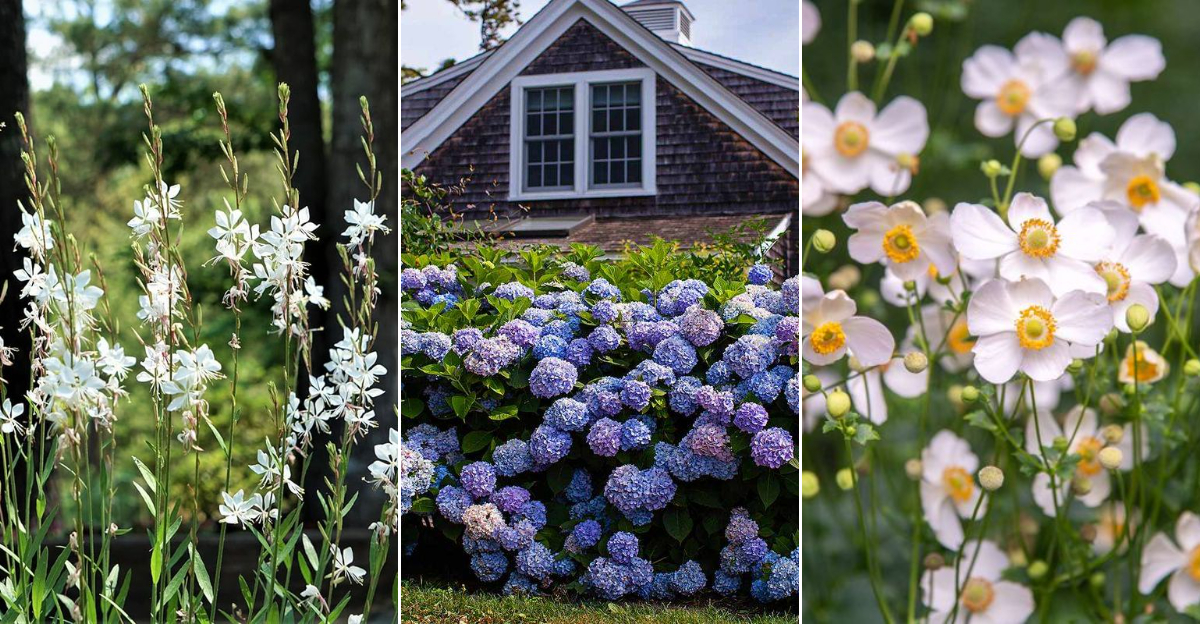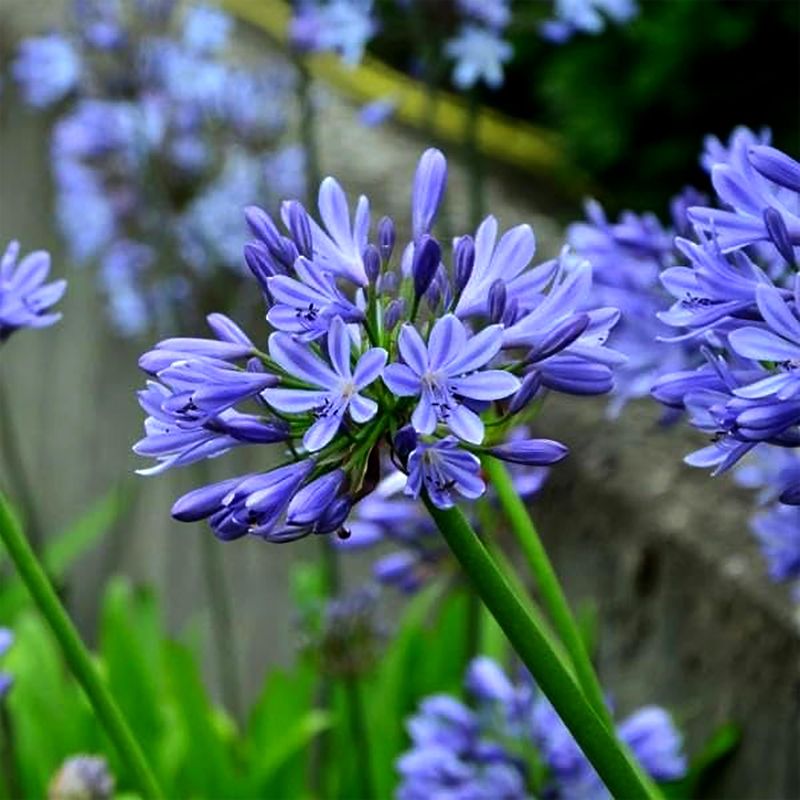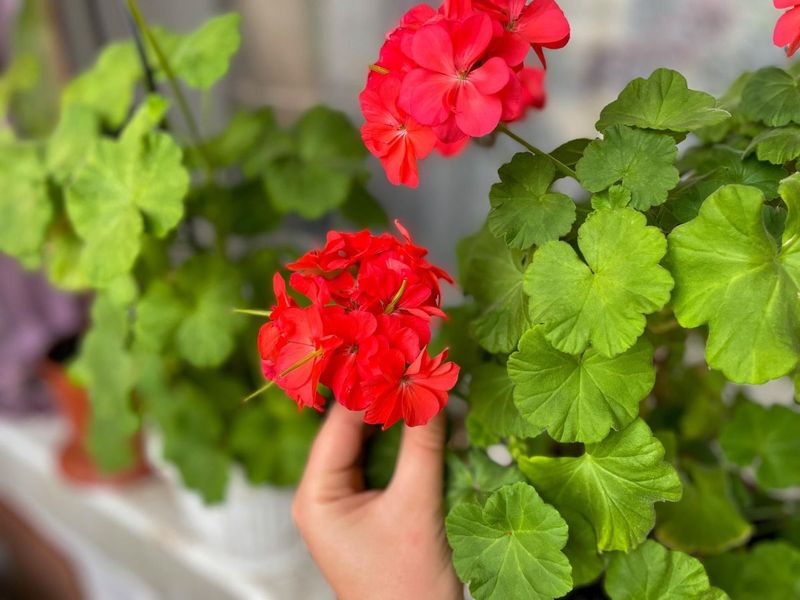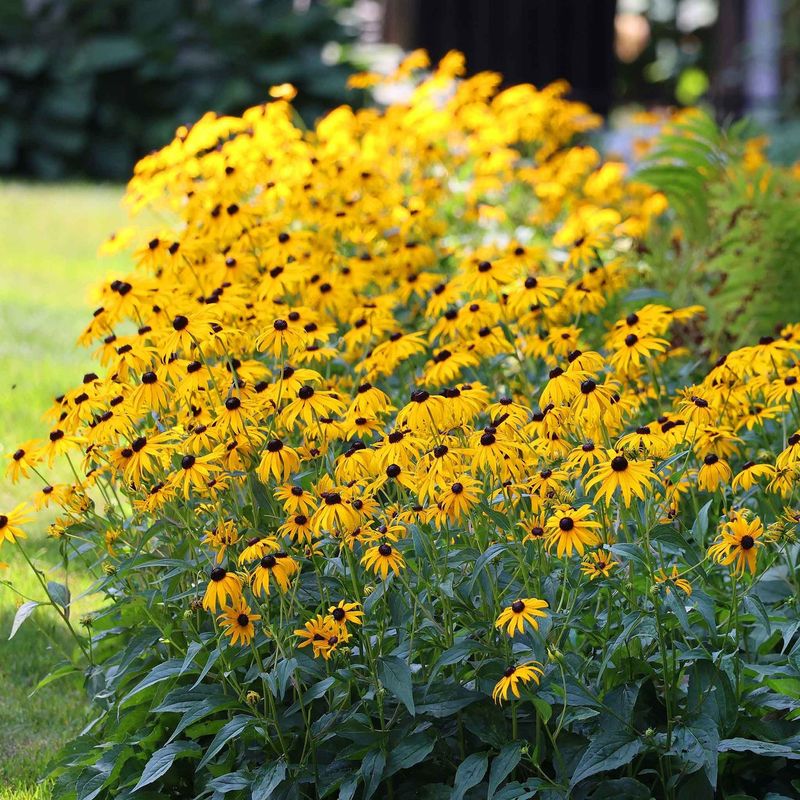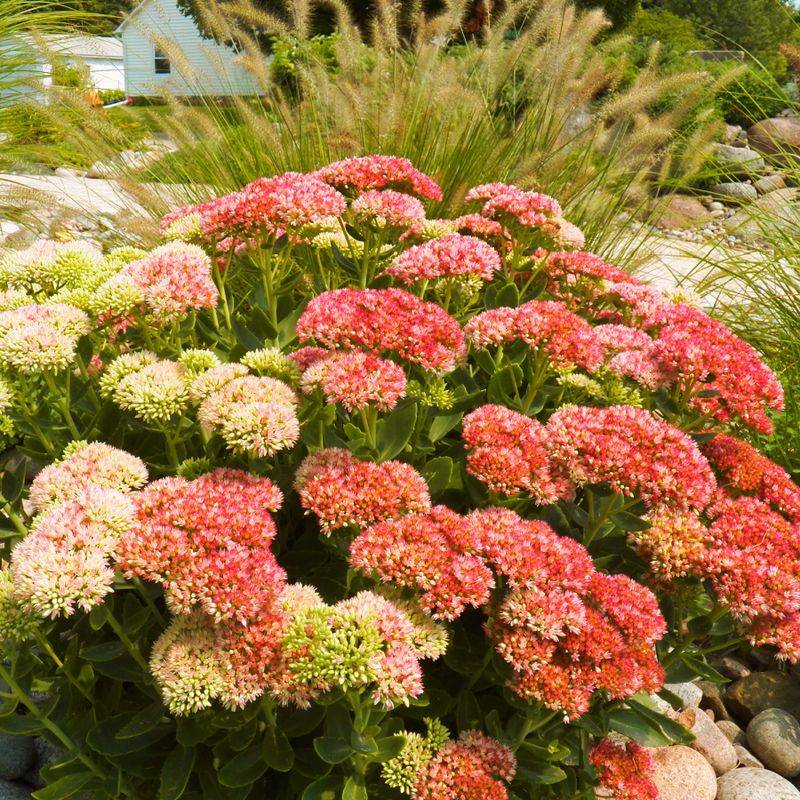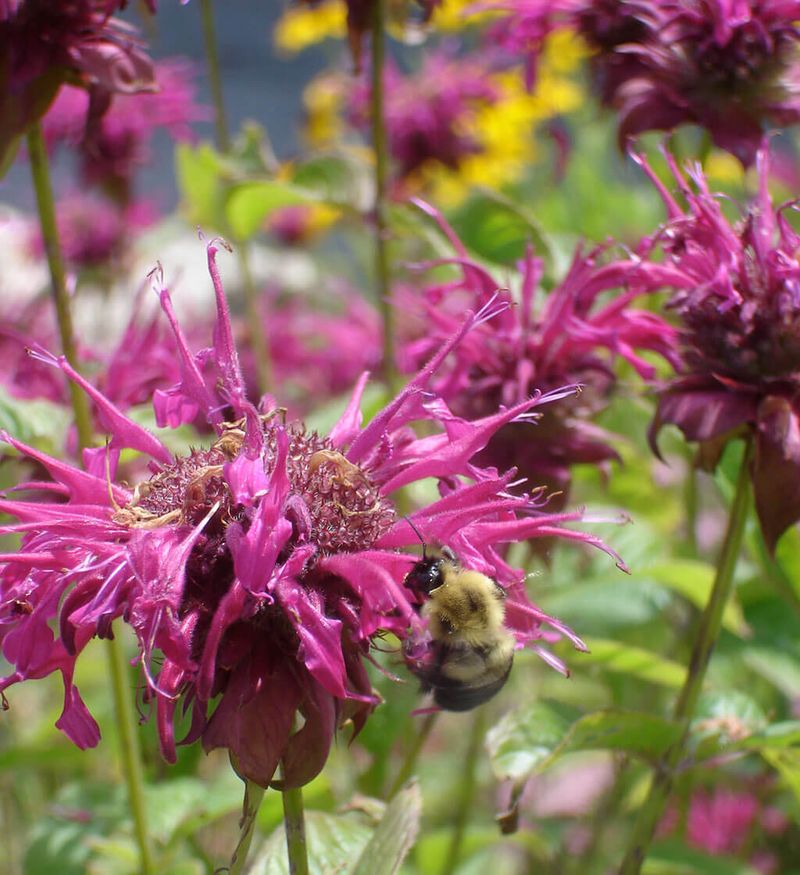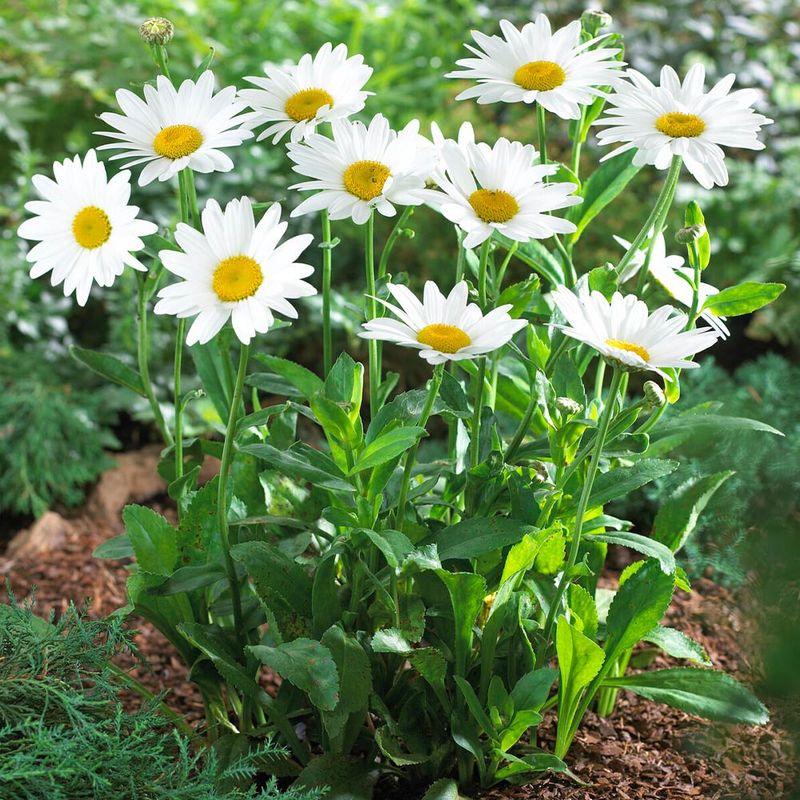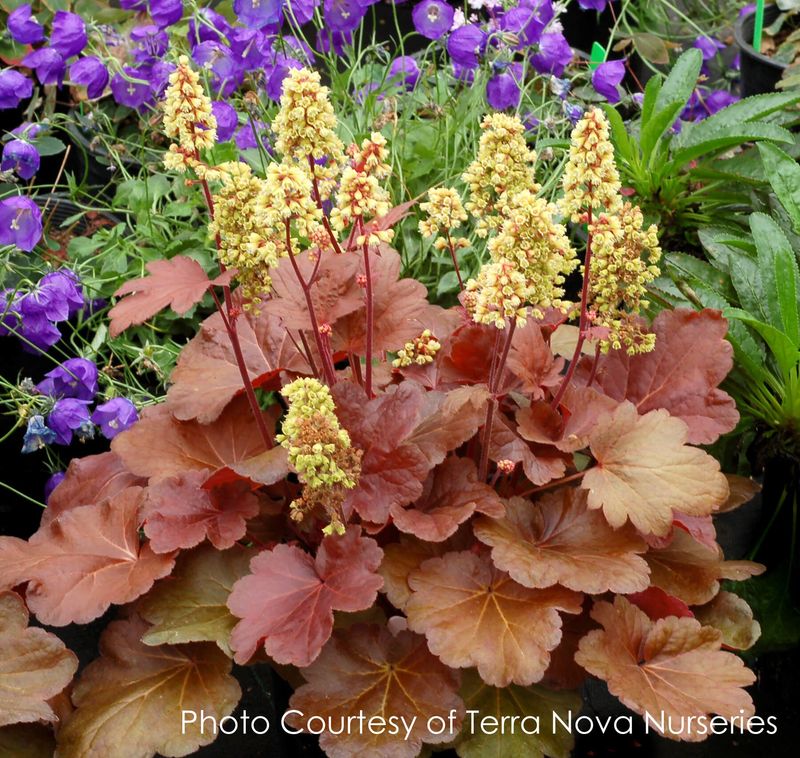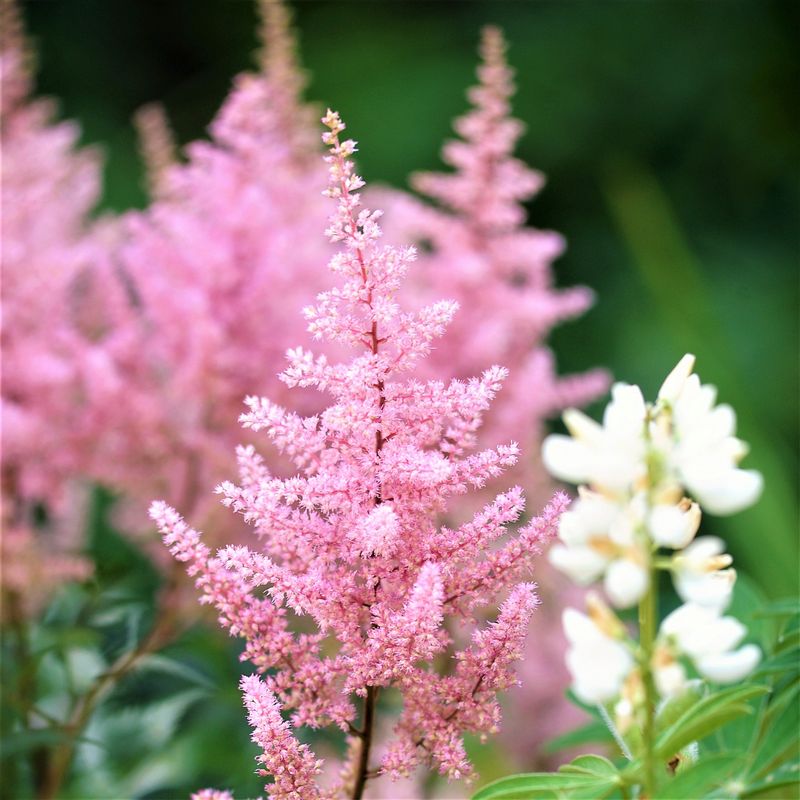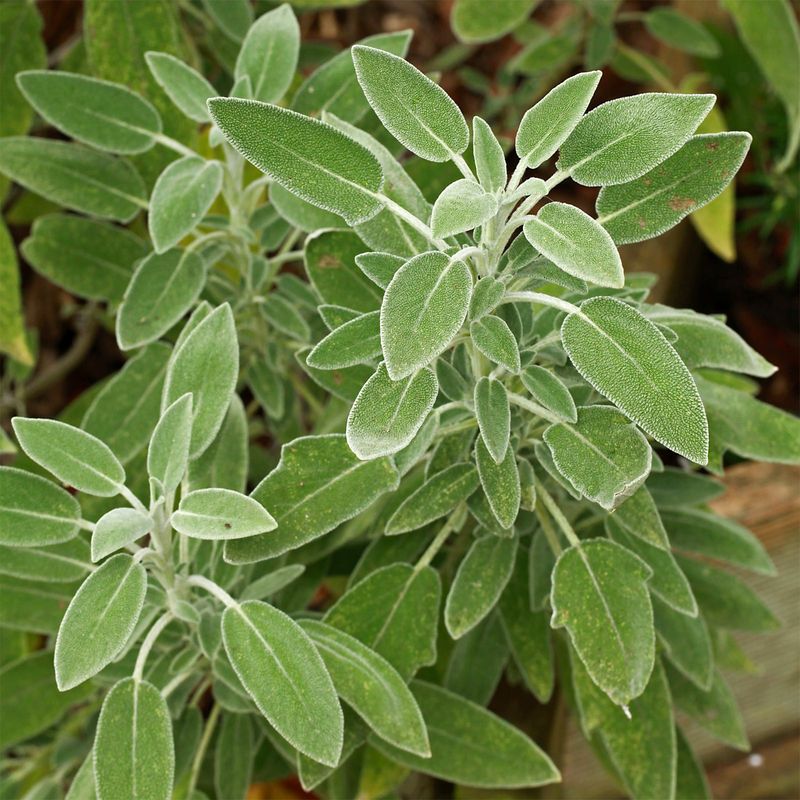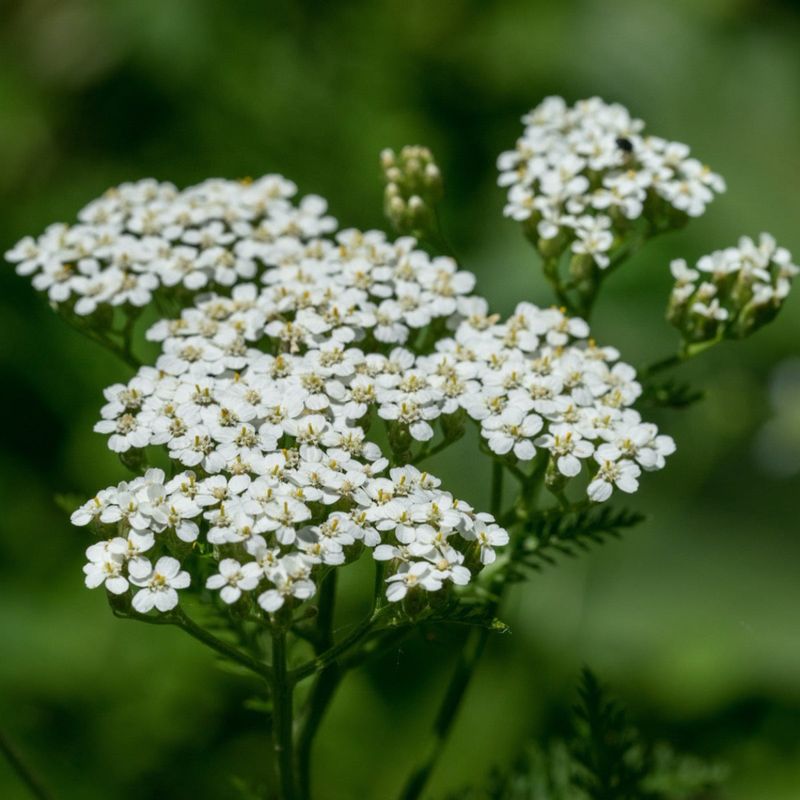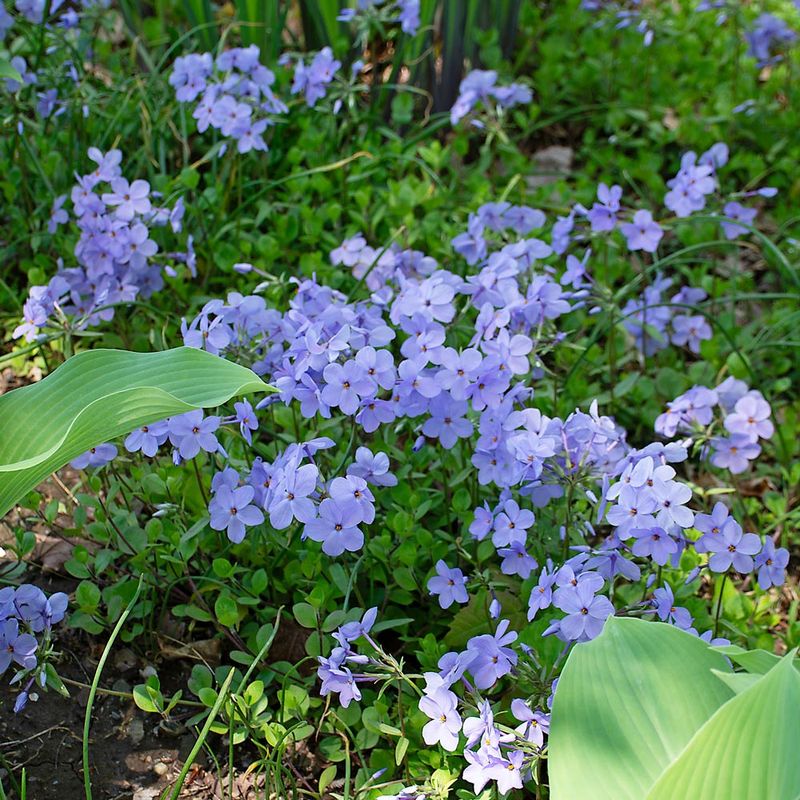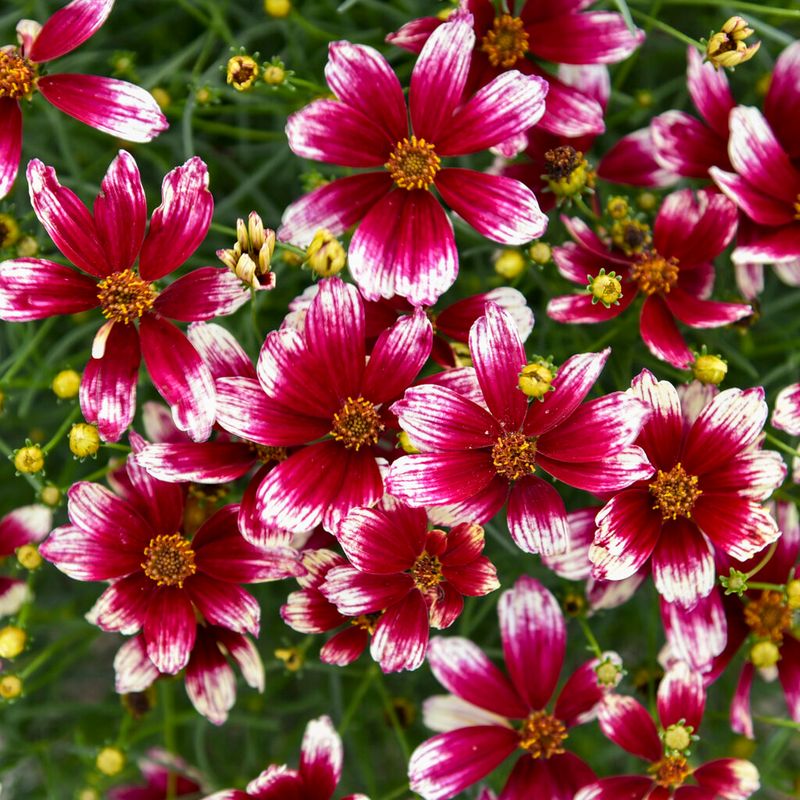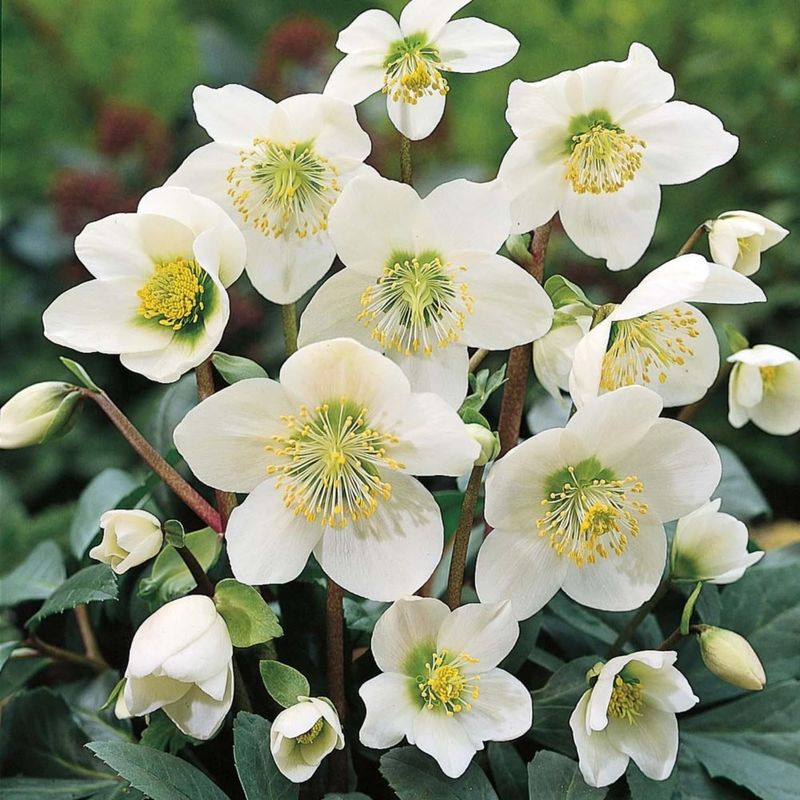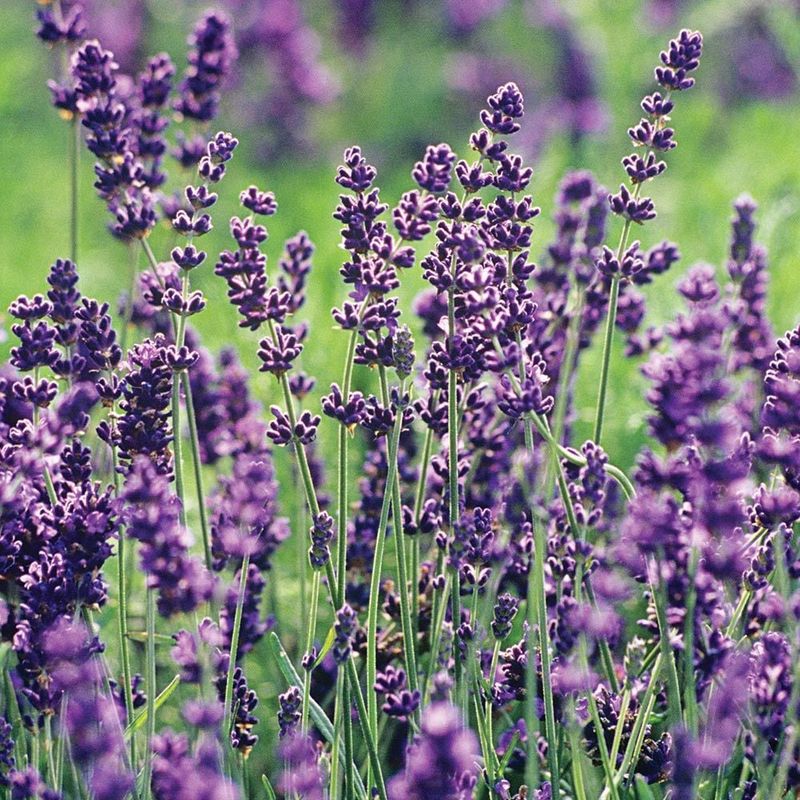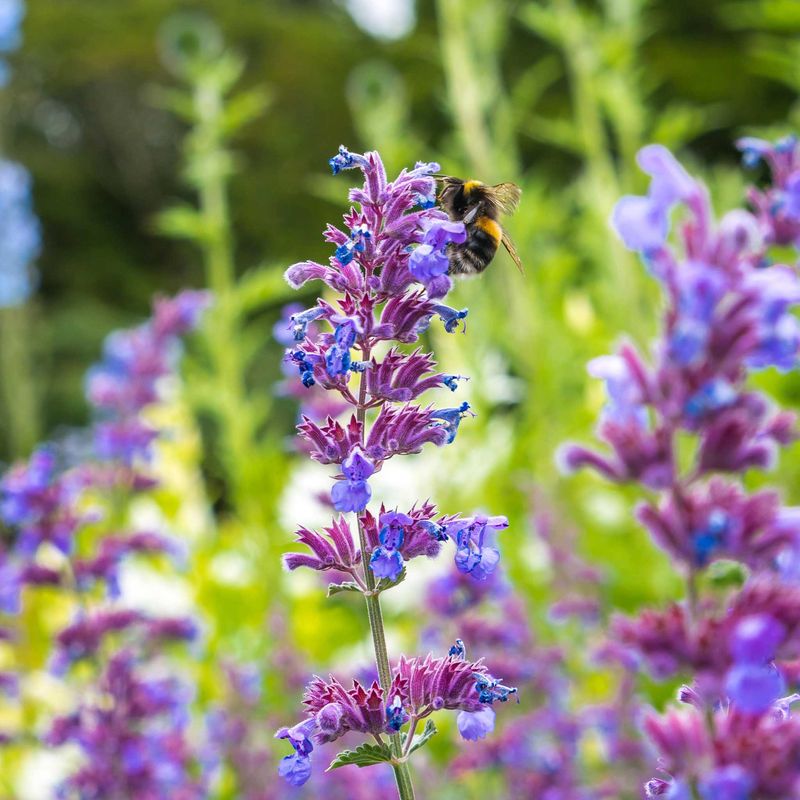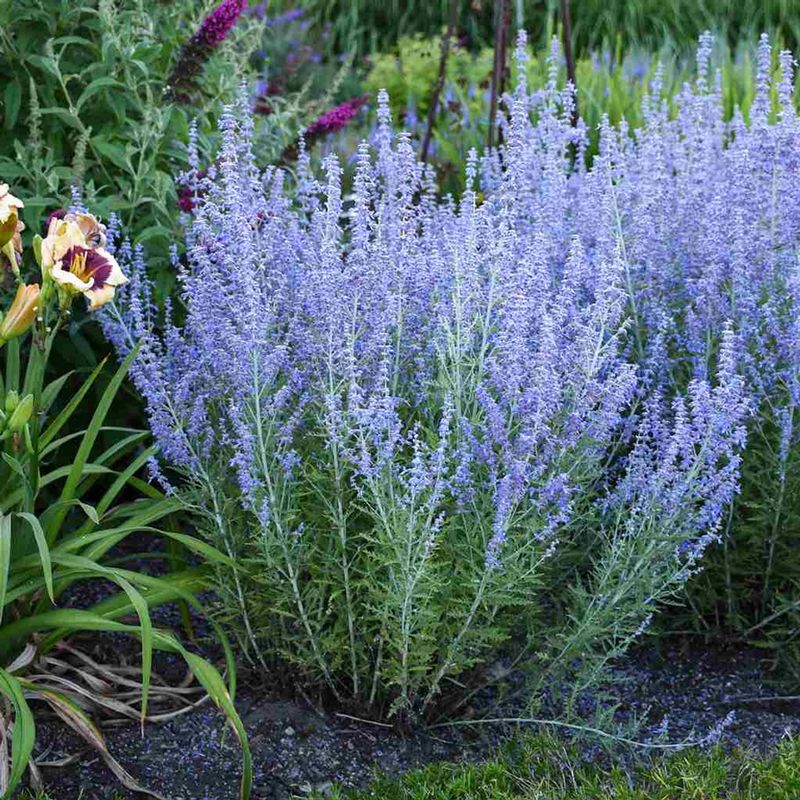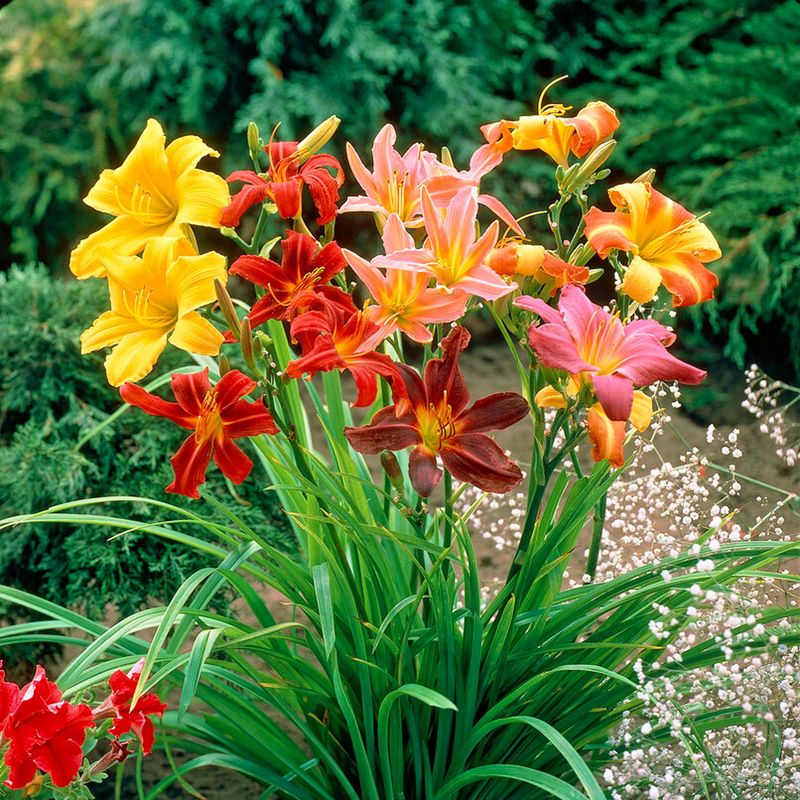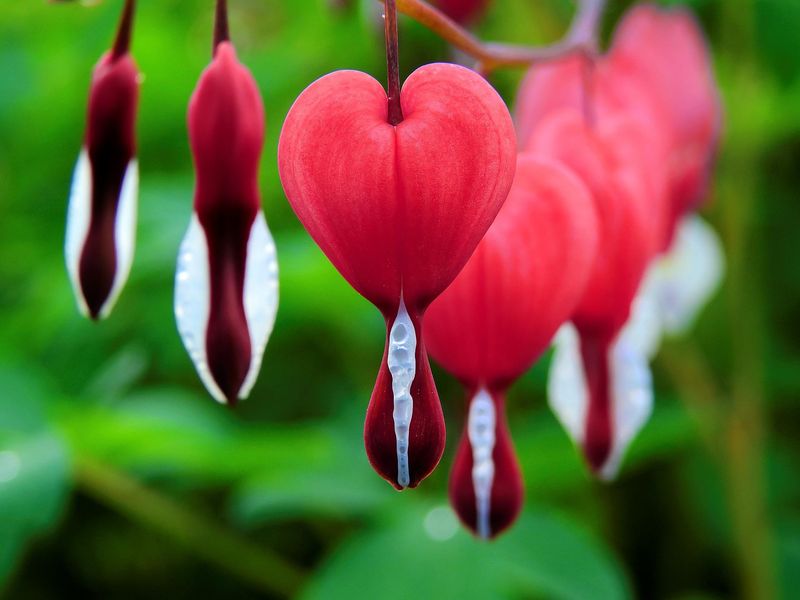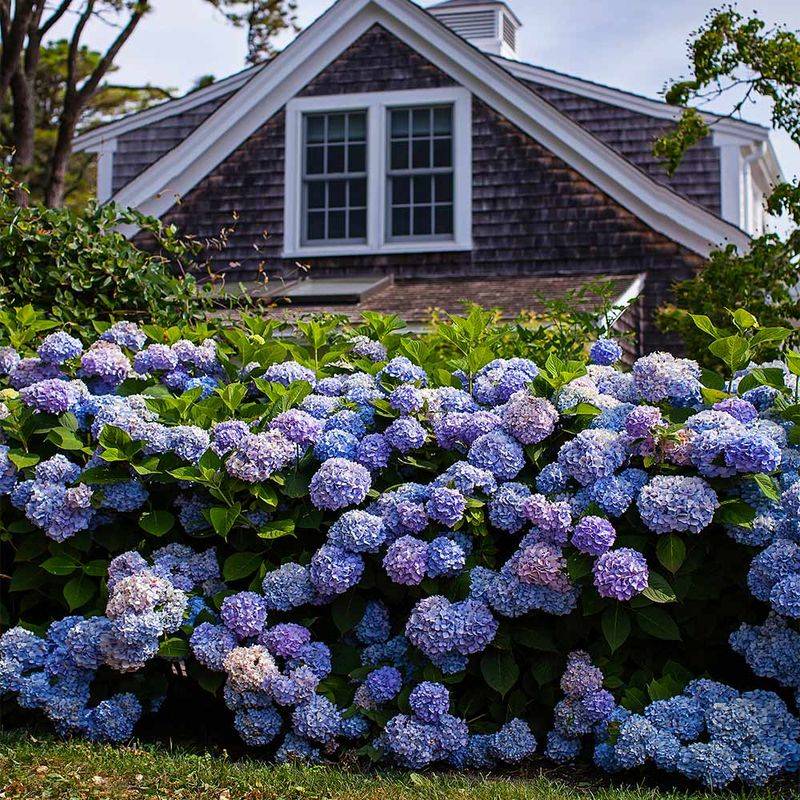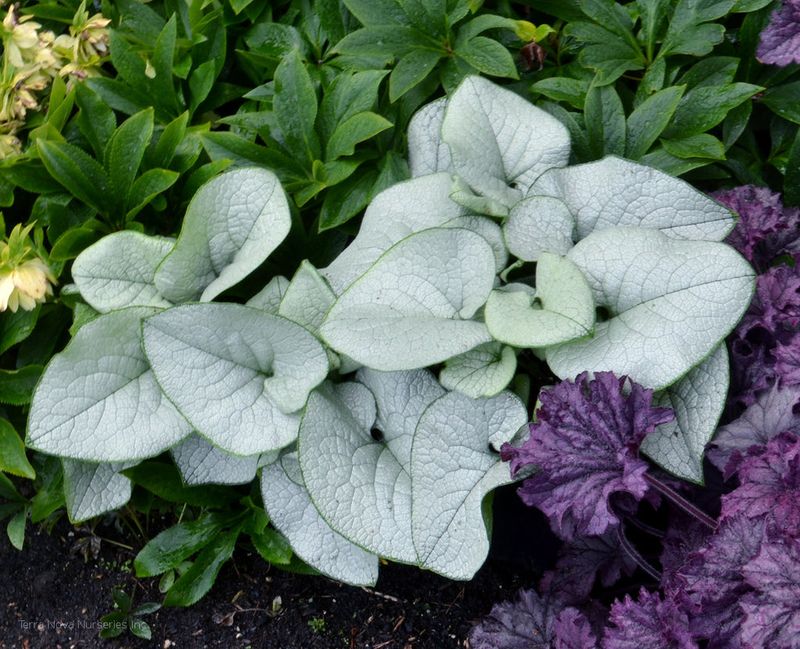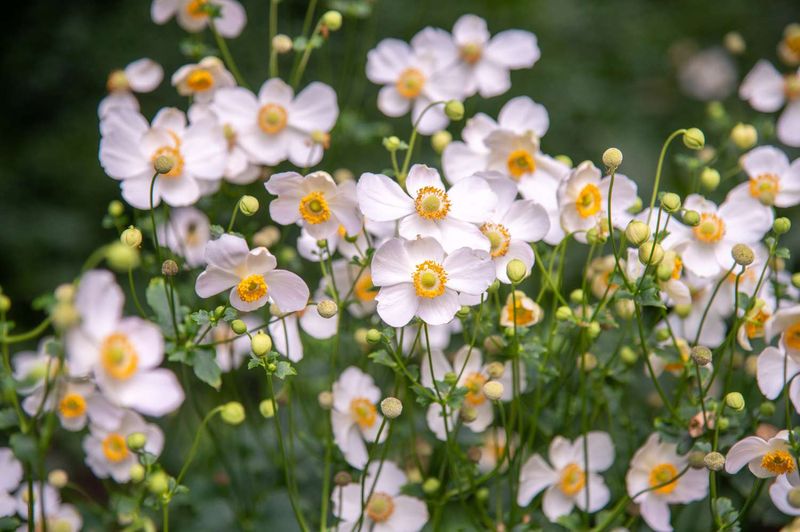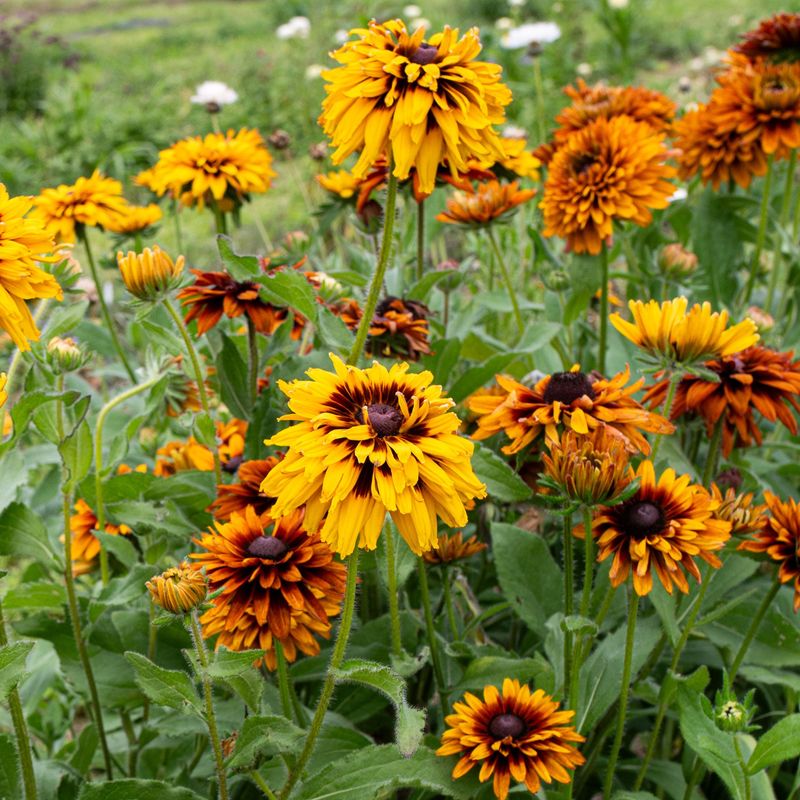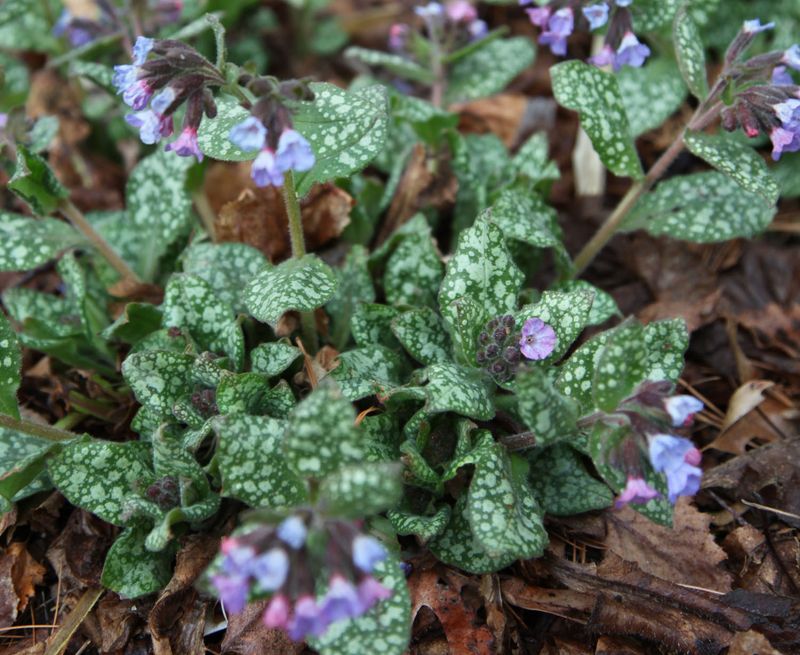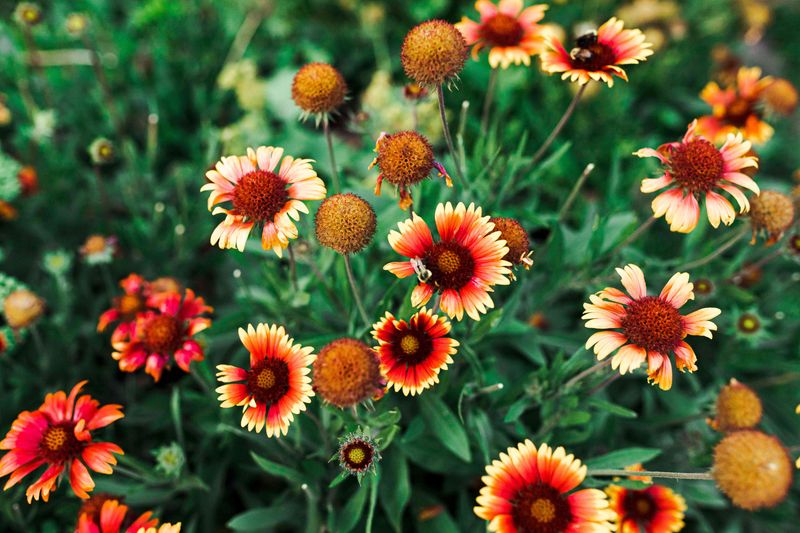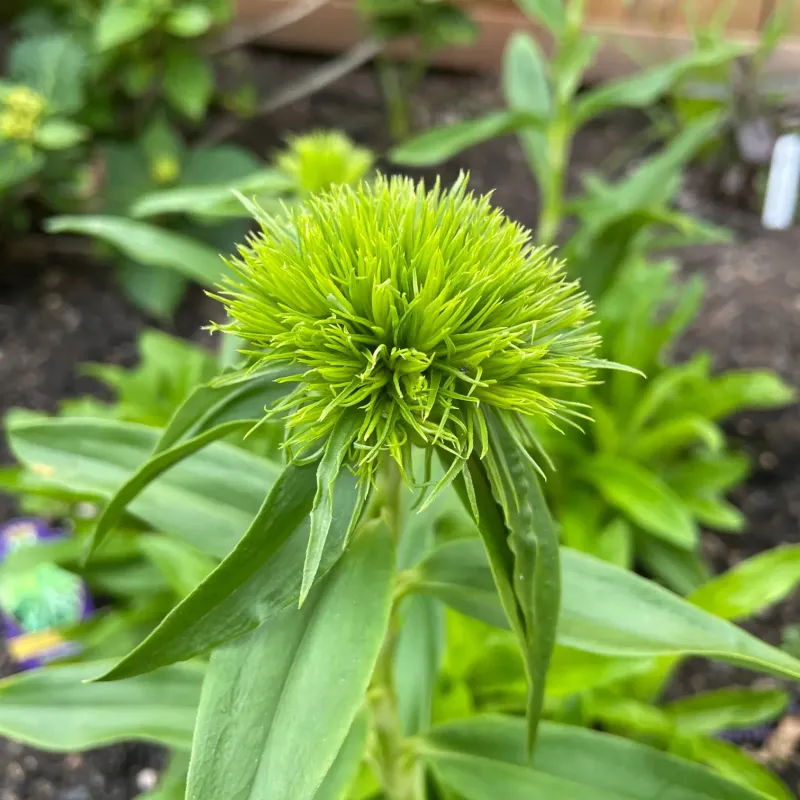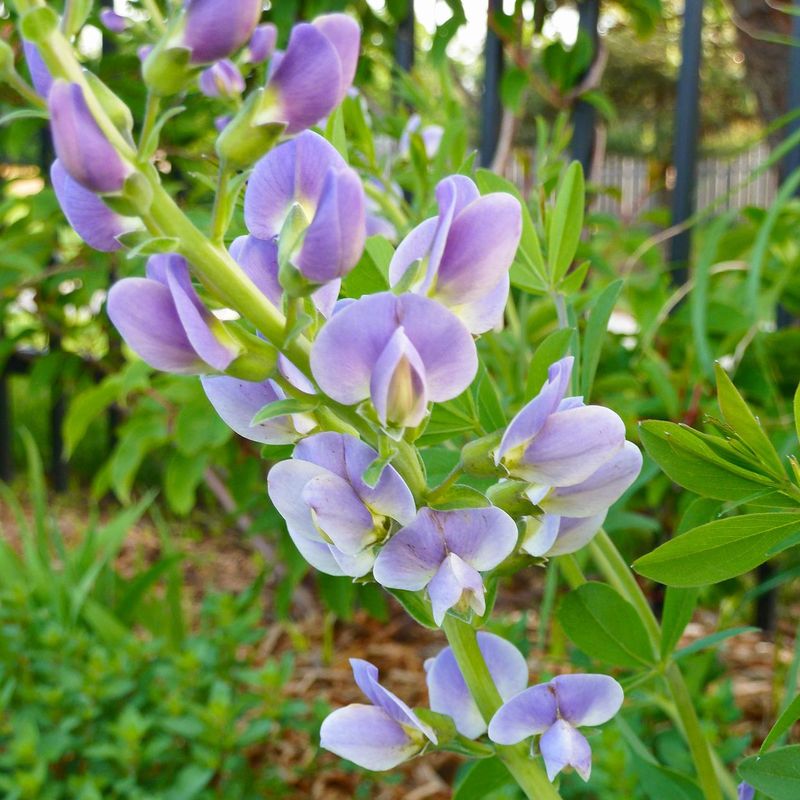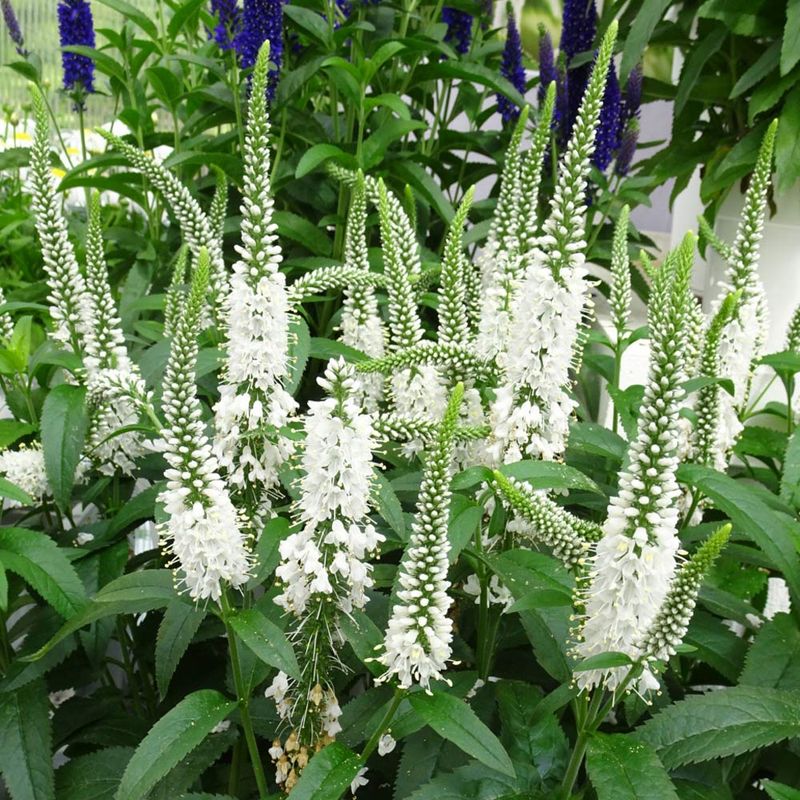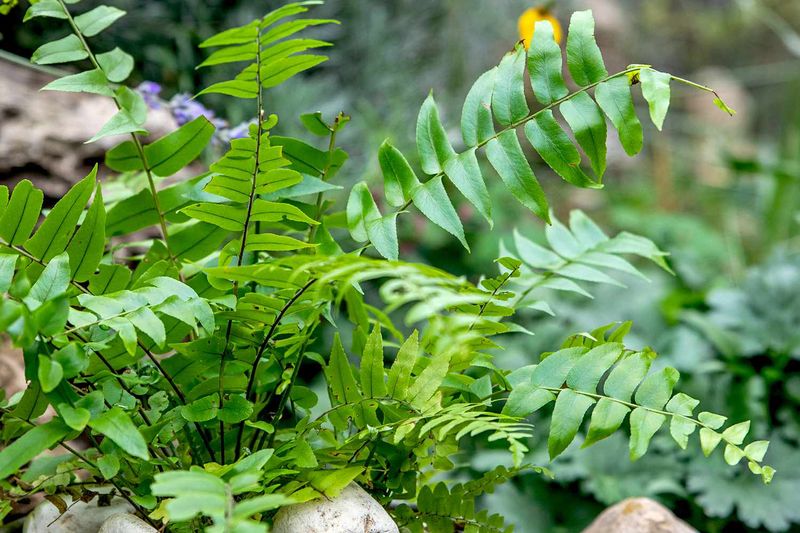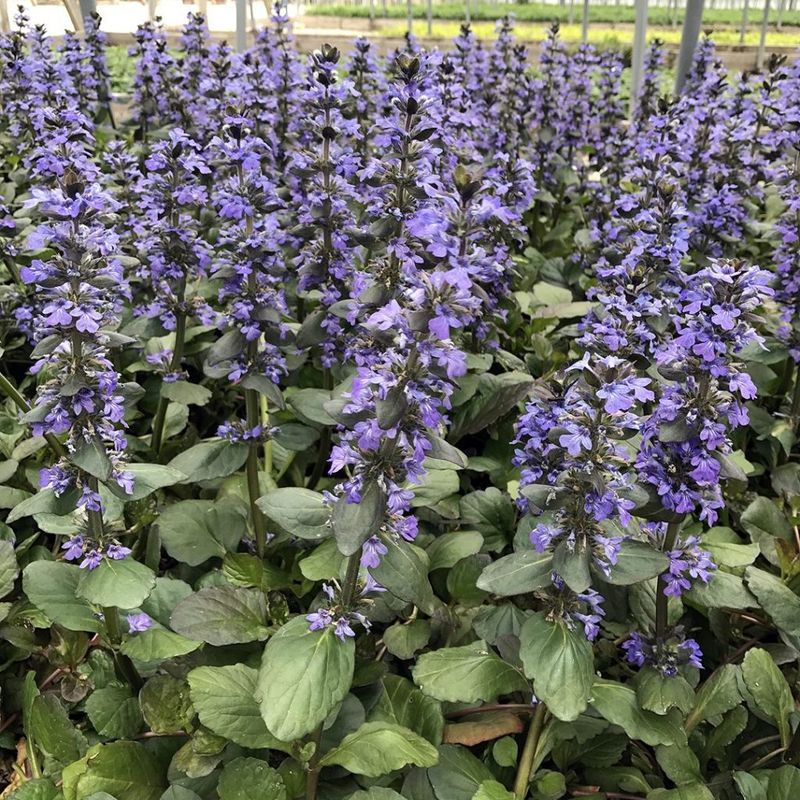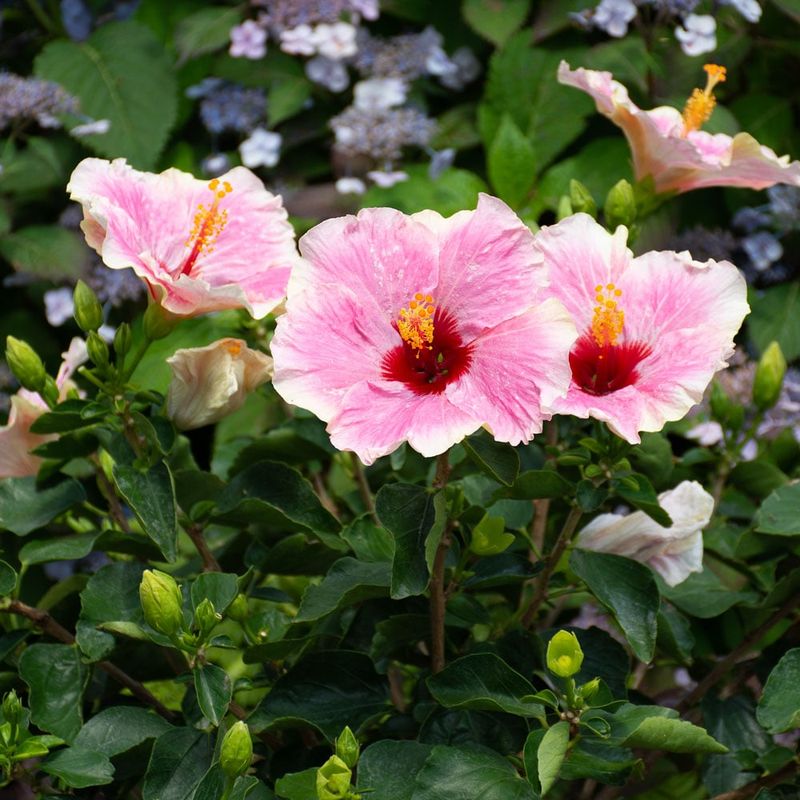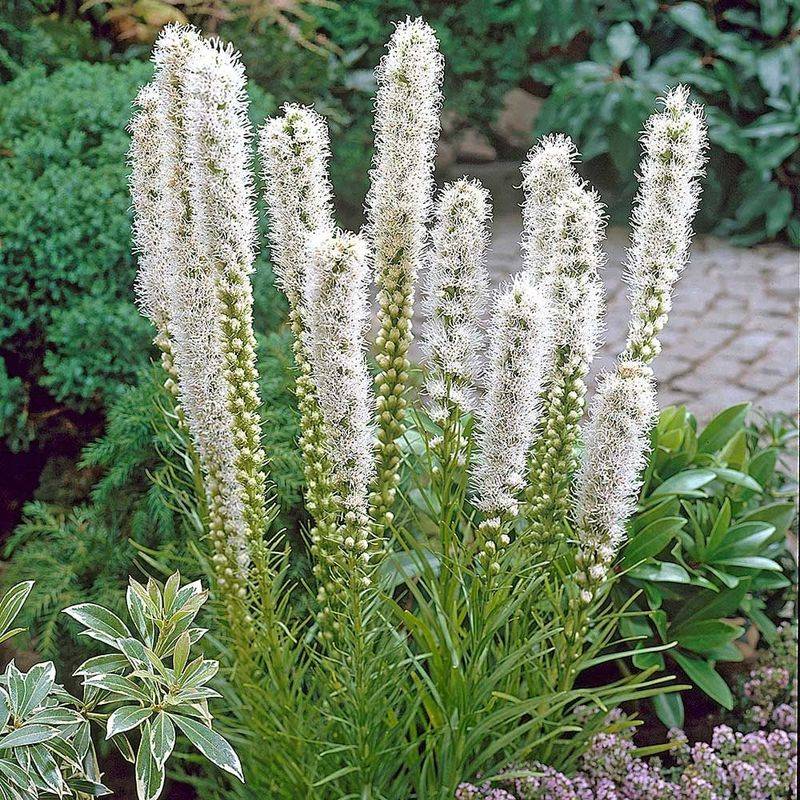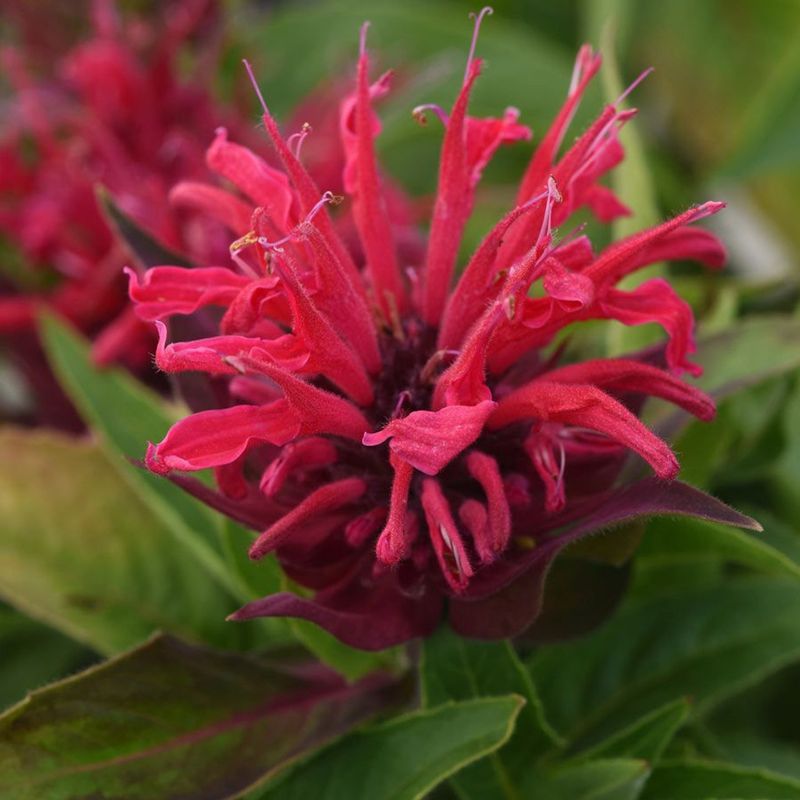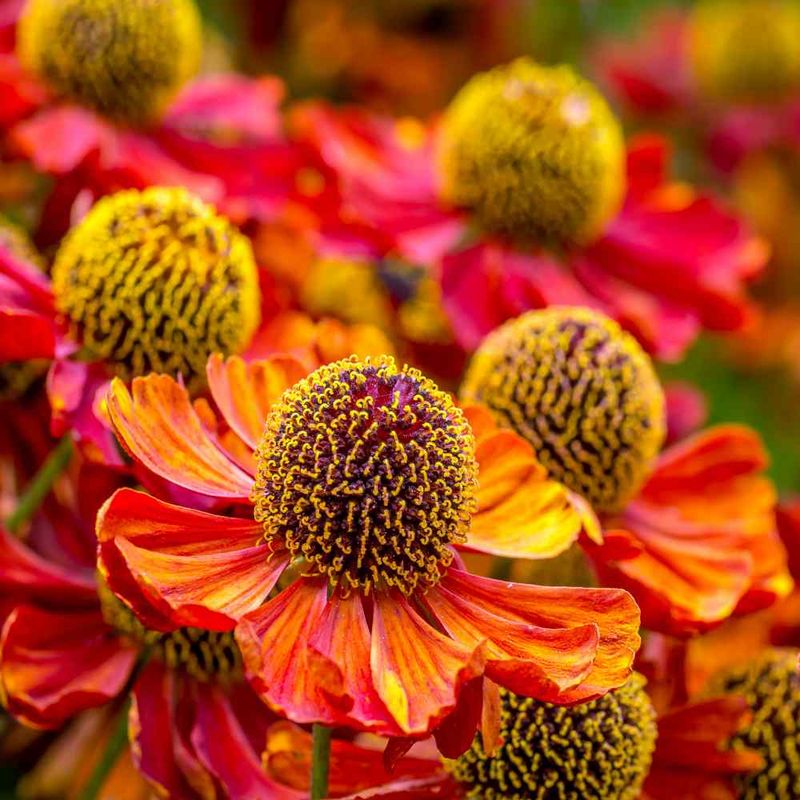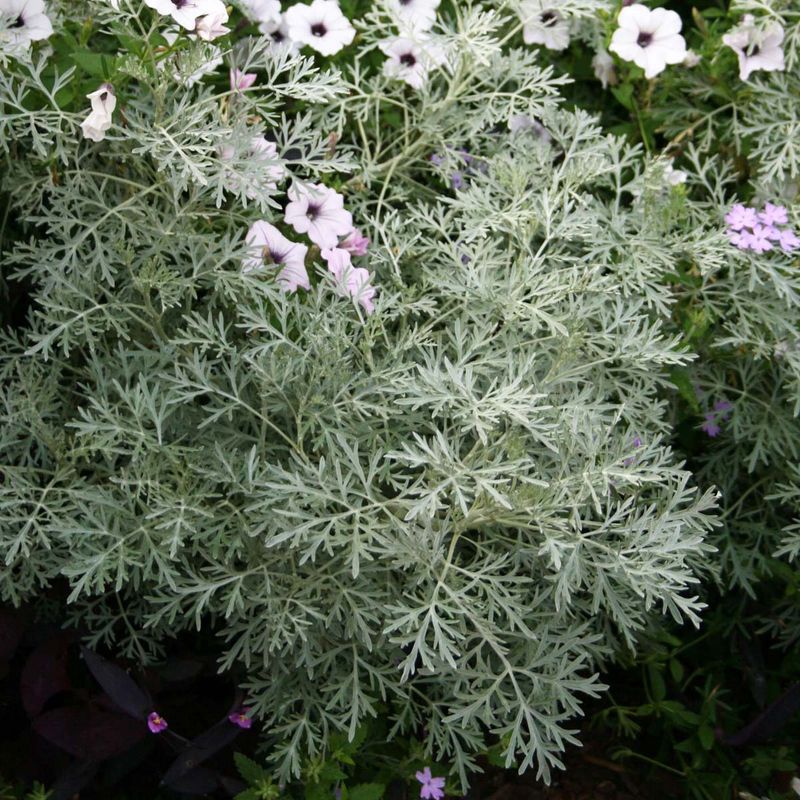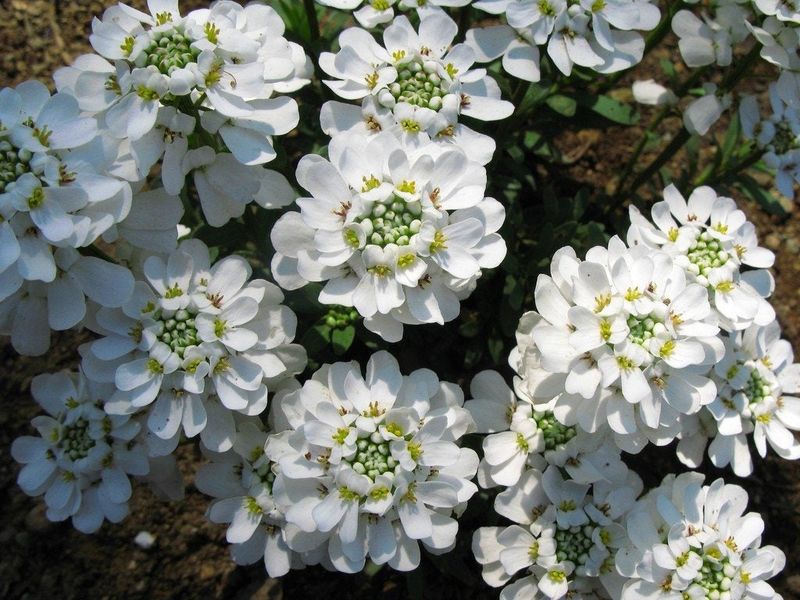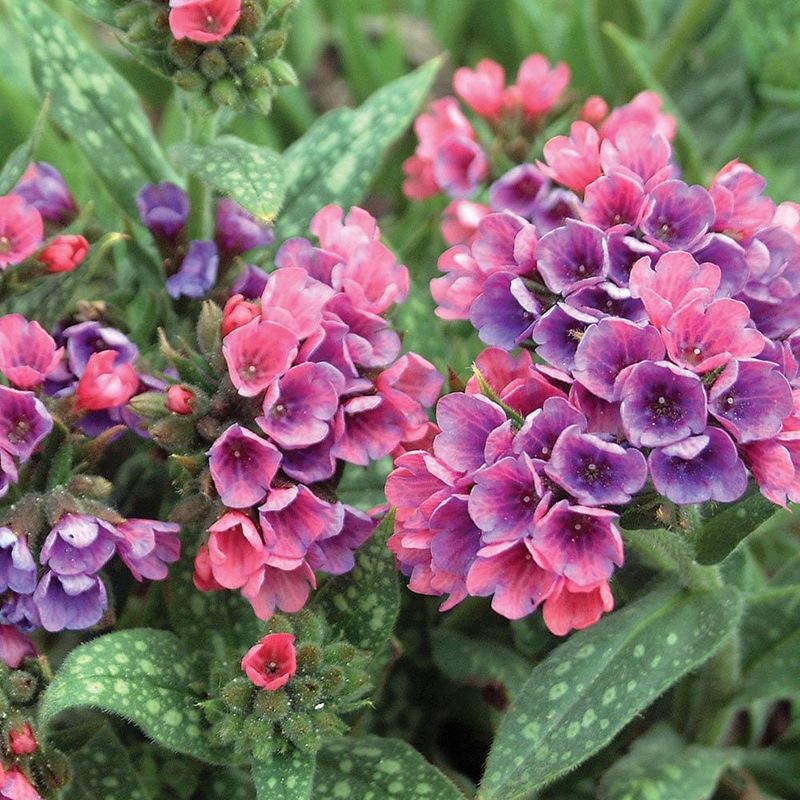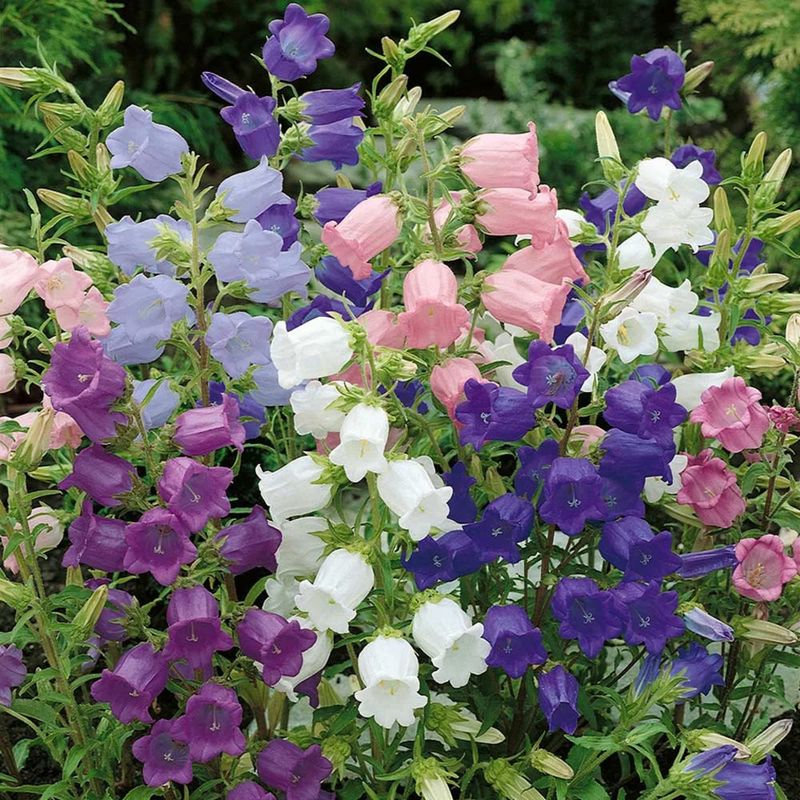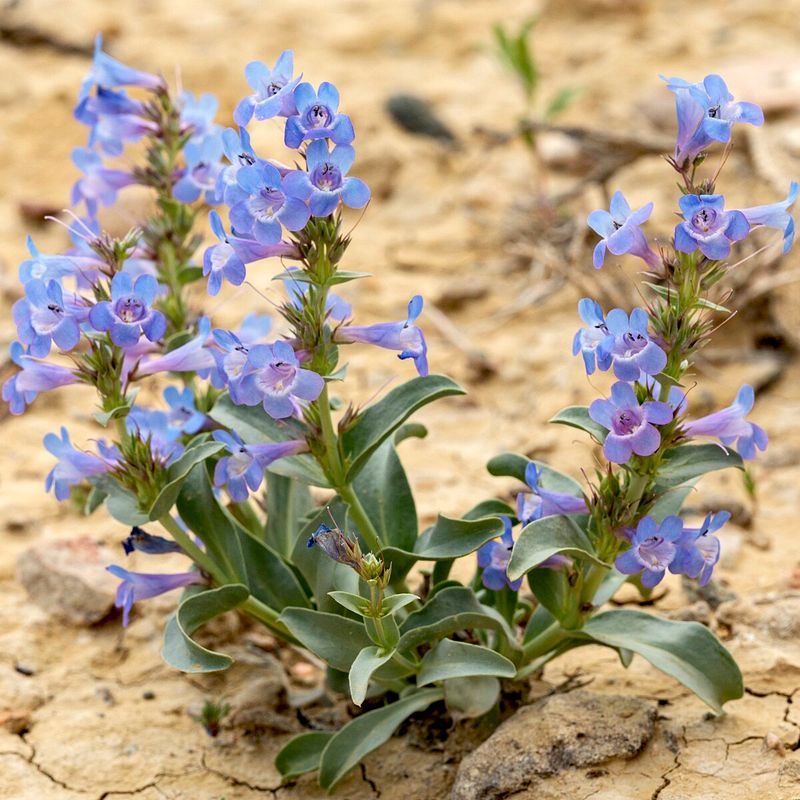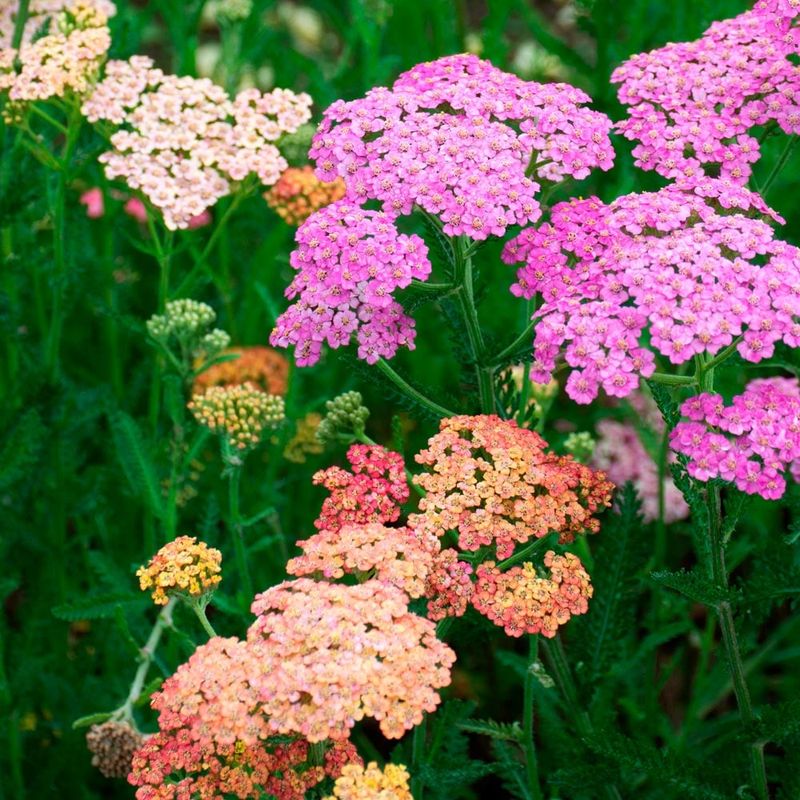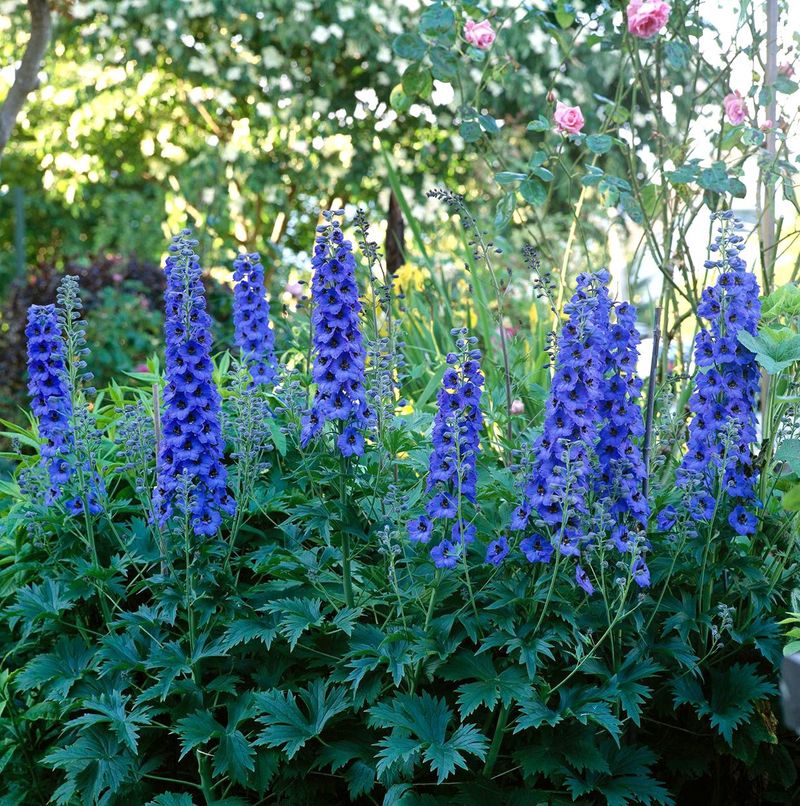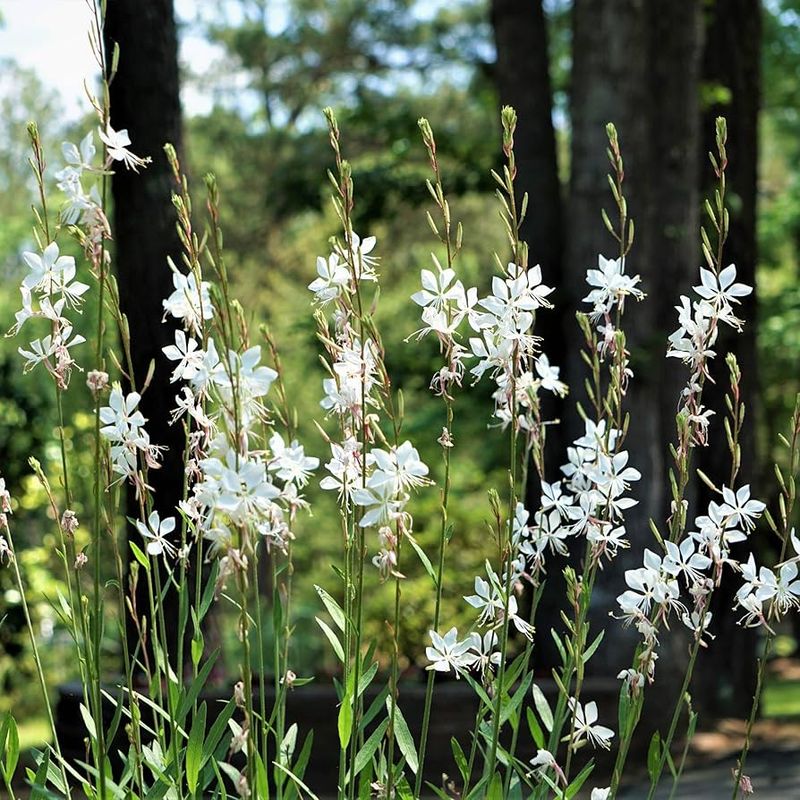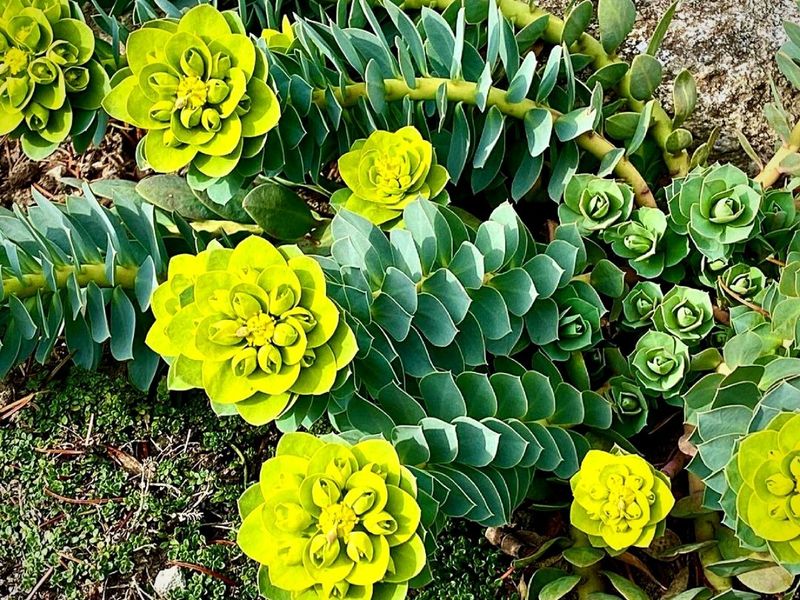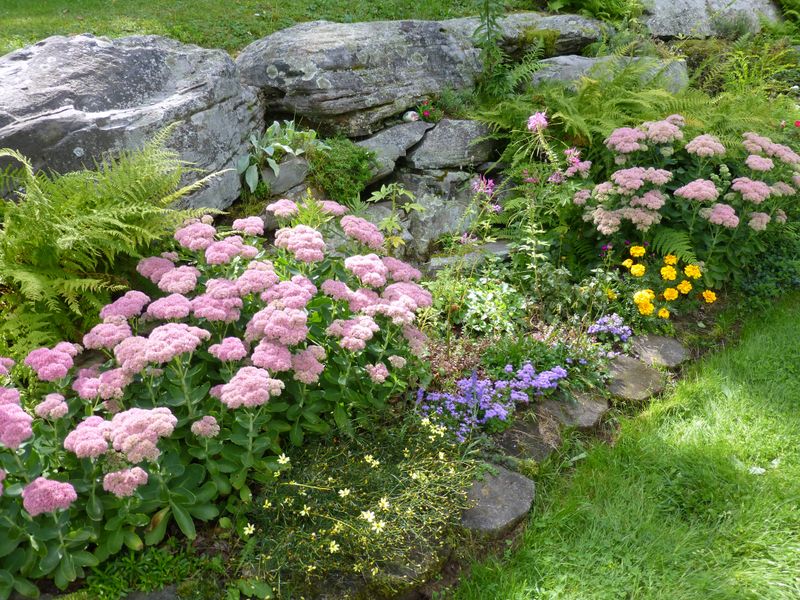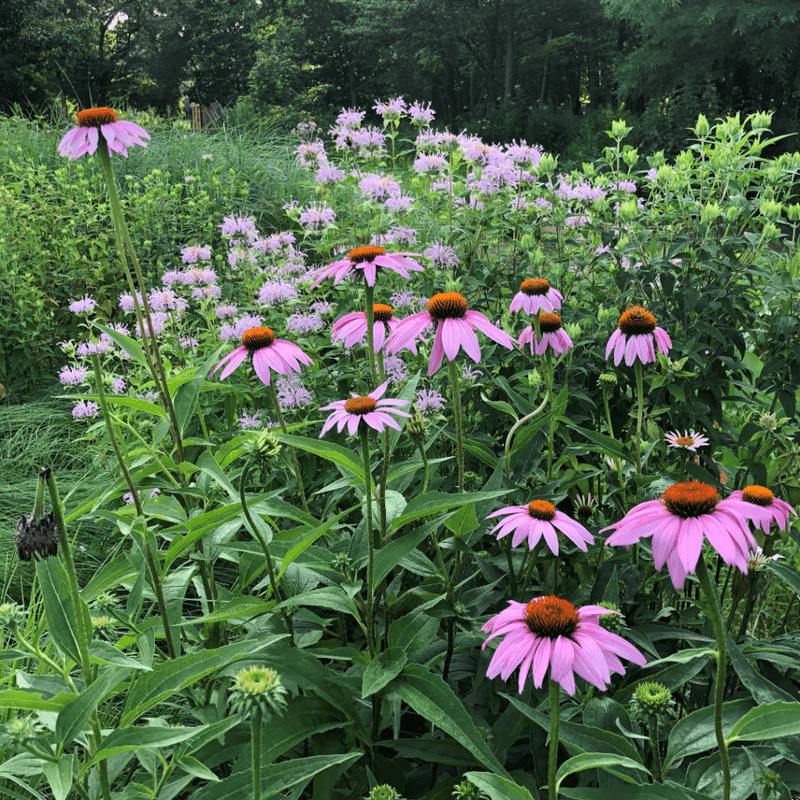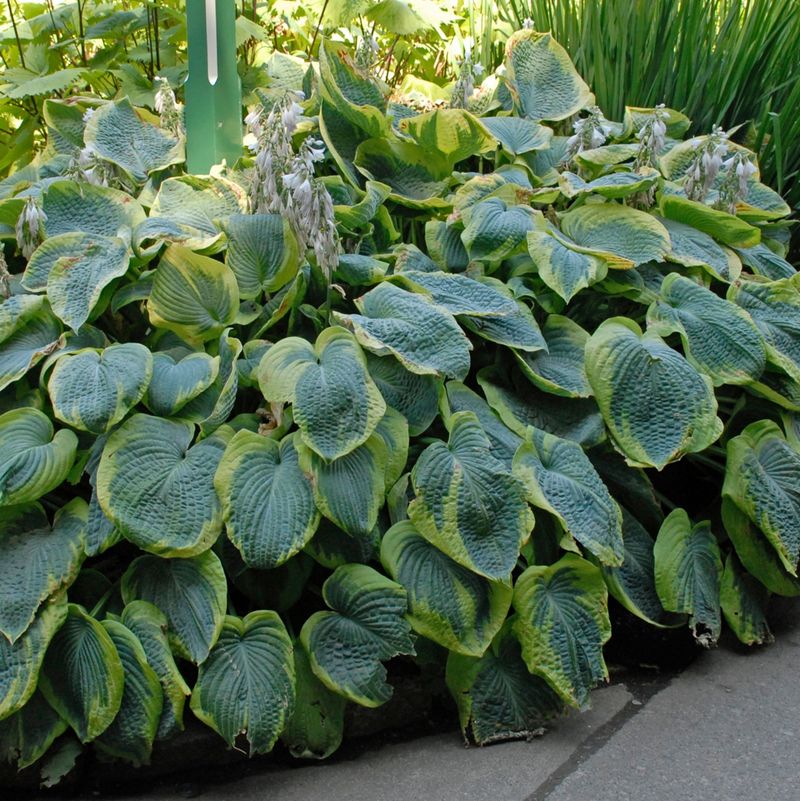Explore these 45 stunning perennials that will transform your summer garden into a vibrant tapestry of color and texture.
From bold blooms to delicate foliage, each plant offers unique beauty and resilience, ensuring your garden remains lively and captivating throughout the season.
1. Agapanthus
Agapanthus, or African lily, is known for its striking, spherical blooms in shades of blue and white. These perennials bring a touch of exotic flair to gardens.
They thrive in full sun and well-drained soil, making them ideal for sunny borders and containers. Blooming in summer, agapanthus provides vibrant color.
Regular watering encourages lush growth and abundant flowers. Agapanthus is perfect for adding height and structure. Their impressive blooms attract pollinators, enhancing garden life. With their bold presence and easy care, agapanthus stands out as a captivating addition to any garden.
2. Geranium
Geraniums are beloved for their bright flowers and ease of care. These perennials offer a palette of colors that brighten gardens.
They thrive in full sun to partial shade and adapt to various soil types. Geraniums bloom from spring to fall, ensuring prolonged color.
Ideal for borders and containers, they attract pollinators, enhancing garden biodiversity. Deadheading promotes more blooms and keeps plants tidy. Geraniums’ hardiness and vibrancy make them a favorite for adding cheerful flora to any garden space.
3. Black-eyed Susan
Black-eyed Susans are cheerful perennials known for their sunny yellow petals and dark centers. They are perfect for adding warmth to summer gardens.
These hardy plants are drought-tolerant and thrive in full sun, making them ideal for hot, dry areas. They adapt to various soil conditions, making them easy to grow.
Reaching up to two feet tall, they create a striking display when planted in masses. Beyond their beauty, black-eyed Susans attract butterflies and bees, supporting local wildlife while beautifying your garden.
4. Sedum
Sedum, or stonecrop, is a versatile perennial that thrives in sunny, dry conditions. Known for its fleshy, water-storing leaves, sedum adds unique texture to gardens.
This plant is excellent for rock gardens, borders, and containers. Its star-shaped flowers bloom in late summer, attracting pollinators like bees and butterflies.
Sedum requires minimal care, making it perfect for low-maintenance spaces. The vibrant blooms and succulent foliage provide visual interest even in harsh conditions. It’s a resilient choice that brings color and life to your summer garden.
5. Bee Balm
Bee balm is a striking perennial that adds a splash of color and fragrance to gardens. Its tubular flowers attract hummingbirds and bees, boosting pollination.
This plant thrives in full sun to partial shade and prefers moist, well-drained soil. Bee balm’s aromatic foliage can also be used in teas, adding versatility.
Its vibrant blooms appear in midsummer and last several weeks. Ideal for borders and wildflower gardens, bee balm not only beautifies but also supports local ecosystems. Regular division keeps it healthy and spreading.
6. Shasta Daisy
Shasta daisies are classic perennials known for their crisp white petals and sunny yellow centers. They bring a timeless charm to any garden.
These easy-to-grow plants thrive in full sun and well-drained soil. Their long blooming season, from early to late summer, ensures continuous beauty.
Shasta daisies reach up to three feet tall, creating striking displays when planted in groups. Beyond their aesthetic appeal, they attract butterflies, adding lively activity to your garden. Ideal for borders and cut flowers, Shasta daisies are a perennial favorite.
7. Coral Bells
Coral bells are admired for their striking foliage, offering a range of colors from deep red to bright lime. These perennials add texture and color to shaded areas.
They thrive in partial shade with well-drained soil and are relatively easy to care for. Coral bells produce delicate, bell-shaped flowers on tall stalks.
Their foliage remains attractive throughout the growing season, providing continuous interest. Ideal for borders and container gardens, coral bells brighten shady spots with their colorful leaves and subtle blooms. They’re a must-have for adding depth to your garden.
8. Astilbe
Astilbe is known for its feathery plumes and fern-like foliage, adding a touch of elegance to shaded garden areas. Its blooms range from white to pink and red.
This perennial thrives in moist, rich soil and partial shade, making it ideal for woodland gardens. Astilbe’s flowers attract butterflies and its foliage remains attractive throughout the season.
These plants are perfect for borders, providing texture and color. Regular watering keeps them healthy in dry spells. Astilbe’s graceful presence enhances any garden with its soft, airy blooms.
9. Salvia
Salvia is a versatile perennial, offering vibrant spikes of flowers in various colors, including purple, red, and blue. It’s a favorite among pollinators like bees and butterflies.
This plant thrives in full sun and well-drained soil, making it a resilient choice for sunny gardens. Salvia’s aromatic foliage adds another layer of interest.
With a long blooming period from late spring to early fall, salvia offers continuous color. Ideal for borders and mixed beds, it provides structure and height, enhancing your garden’s visual appeal. Prune spent blooms for repeat flowering.
10. Yarrow
Yarrow is a hardy perennial known for its flat-topped clusters of flowers in shades of yellow, pink, and white. Its fern-like foliage adds texture to gardens.
This plant thrives in full sun and is drought-resistant, perfect for low-maintenance landscapes. Yarrow attracts beneficial insects, supporting garden health.
Blooming from late spring to early fall, it provides long-lasting color. Ideal for borders and wildflower gardens, yarrow’s tough nature makes it a reliable choice for challenging conditions. Its cut flowers are excellent for arrangements, adding natural beauty indoors.
11. Phlox
Phlox is celebrated for its fragrant, colorful blooms that blanket gardens in pinks, purples, and whites. This perennial adds a cottage garden charm.
Thriving in full sun to partial shade, phlox prefers well-drained, fertile soil. Its compact growth is ideal for borders and containers.
Blooming from mid-summer to early fall, phlox attracts butterflies and hummingbirds, enhancing garden life. Regular deadheading promotes more blooms. Use phlox in mass plantings for eye-catching displays or mixed with other perennials for a vibrant tapestry of color.
12. Coreopsis
Coreopsis, with its cheerful yellow blooms, brings sunshine to gardens even on cloudy days. These perennials are beloved for their long blooming period and easy care.
They thrive in full sun and well-drained soil, making them ideal for sunny beds and borders. Coreopsis is drought-tolerant, perfect for water-wise gardens.
Blooming from early summer to fall, they provide continuous color. Regular deadheading encourages more flowers. Coreopsis’s bright blooms attract butterflies, adding lively movement. They’re perfect for naturalistic plantings or as a cheerful addition to any garden space.
13. Hellebore
Hellebores, or Lenten roses, are winter-blooming perennials that bring color to gardens when few others can. Known for their nodding blooms, they are a symbol of resilience.
These plants prefer partial to full shade and well-drained soil. Their evergreen foliage provides year-round interest.
Blooming from late winter to early spring, hellebores are a joy in the garden’s quiet months. Ideal for shaded borders and woodland gardens, they require minimal care. Their flowers attract early pollinators, making them valuable for supporting wildlife in cold climates.
14. Lavender
Lavender is beloved for its fragrant purple spikes and silvery foliage, adding both beauty and a soothing aroma to summer gardens. Its calming scent can transform any space into a peaceful retreat.
This perennial thrives in sunny locations with well-drained soil. Lavender’s drought resistance makes it perfect for dry climates. Regular pruning post-bloom encourages bushier growth and more flowers.
Beyond its visual appeal, lavender attracts pollinators like bees, enhancing biodiversity. It’s ideal for borders, pathways, and even containers, effortlessly elevating your garden’s charm.
15. Catmint
Catmint is prized for its aromatic foliage and spikes of purple flowers, bringing a relaxed charm to gardens. It’s a hardy perennial that thrives in sunny locations.
This plant is drought-tolerant and prefers well-drained soil, perfect for low-maintenance gardens. Catmint’s long blooming period, from late spring to fall, ensures continuous color.
Ideal for borders and cottage gardens, it attracts pollinators like bees and butterflies. Its mounding habit makes it perfect for softening edges and filling gaps. Prune after flowering to encourage a second bloom and maintain shape.
16. Russian Sage
Russian sage is a striking perennial known for its tall, airy spikes of lavender flowers and silvery foliage. It adds a touch of elegance and movement to sunny gardens.
This plant thrives in full sun and well-drained soil, making it drought-tolerant and low-maintenance. Its aromatic leaves add another sensory dimension.
Blooming from mid-summer to fall, Russian sage attracts pollinators and provides structure. Ideal for borders and mixed beds, it pairs well with other sun-loving perennials. Prune in early spring for vibrant new growth and to maintain its shape.
17. Daylily
Daylilies are a gardener’s favorite, offering numerous colors and a long blooming season. These hardy perennials can survive in various climates and soil types.
Each blossom lasts only a day, but each stem produces multiple flowers, ensuring a constant display throughout summer. With minimal care, daylilies are ideal for busy gardeners.
They thrive in full sun to partial shade and prefer well-drained soil. Perfect for mass plantings, borders, or as ground covers, daylilies are a vibrant addition, continuously brightening your summer landscape.
18. Bleeding Heart
Bleeding hearts are known for their enchanting, heart-shaped flowers that dangle gracefully from arching stems. These perennials add whimsy to shaded gardens.
They thrive in partial to full shade and prefer moist, well-drained soil. Blooming in spring, their flowers create a romantic display.
After flowering, the foliage may die back, so it’s good to pair them with other shade-loving plants that fill in gaps. Bleeding hearts are perfect for woodland gardens and shaded borders, offering a touch of charm and nostalgia with their unique blooms.
19. Hydrangea
Hydrangeas are cherished for their large, showy blooms that can change color based on soil pH. These perennials bring lush beauty to gardens.
They thrive in partial shade and well-drained, rich soil. Blooming from summer to fall, hydrangeas provide long-lasting color.
Regular pruning helps maintain their shape and encourages more blooms. Hydrangeas are ideal for borders, foundation plantings, and containers, offering versatile beauty. Their flowers are excellent for cutting, adding charm indoors. For dramatic garden displays, pair them with contrasting foliage plants.
20. Brunnera
Brunnera, also known as Siberian bugloss, is prized for its heart-shaped leaves with silvery patterns and clusters of delicate blue flowers. It’s perfect for shady areas.
This perennial thrives in partial to full shade and well-drained soil. Its foliage remains attractive throughout the growing season.
Blooming in spring, Brunnera’s flowers resemble forget-me-nots, adding a touch of nostalgia. Ideal for woodland gardens and shaded borders, it pairs well with ferns and hostas. Minimal maintenance is required, making it a reliable choice for low-light areas.
21. Japanese Anemone
Japanese anemones are elegant perennials, known for their graceful, nodding flowers that bloom from late summer to fall. Their blooms in shades of pink and white add sophistication.
These plants thrive in partial shade and rich, well-drained soil. They require minimal care once established, making them easy to grow.
The tall, airy stems of Japanese anemones add movement to garden beds. Perfect for borders and cottage gardens, they complement other late-blooming perennials beautifully. Their long blooming period ensures lasting color as the growing season winds down.
22. Rudbeckia
Rudbeckia, known as black-eyed Susan, is a beloved perennial for its bold, sunny flowers and easy care. It brightens gardens with its cheerful blooms.
Thriving in full sun, Rudbeckia is drought-tolerant and adaptable to various soil types. It blooms from mid-summer to fall, providing continuous color.
Ideal for borders and wildflower gardens, Rudbeckia attracts butterflies and bees, supporting pollinators. Its cut flowers are wonderful for arrangements. For extended blooming, deadhead spent flowers. Rudbeckia’s resilience makes it a staple in both cottage and modern landscapes.
23. Lungwort
Lungwort is valued for its unique, spotted foliage and clusters of pink and blue flowers. It’s perfect for adding interest to shady garden areas.
This perennial thrives in partial to full shade and moist, well-drained soil. Its leaves provide decorative interest even after the flowers fade.
Lungwort is ideal for woodland gardens and shaded borders, pairing well with ferns and hostas. Blooming in early spring, it brings color when few others do. Its low-maintenance nature makes it perfect for gardeners seeking beauty with minimal effort.
24. Gaillardia
Gaillardia, or blanket flower, is known for its vibrant, daisy-like blooms in red and yellow. It’s a hardy perennial that thrives in full sun.
This plant is heat and drought-tolerant, making it ideal for dry, sunny spots. Gaillardia blooms from early summer to fall, providing continuous color.
Perfect for borders and wildflower gardens, it attracts butterflies and bees, supporting garden health. Deadheading extends its blooming season. Gaillardia is a resilient choice, adding fiery hues and lively movement to your garden.
25. Dianthus
Dianthus, or pinks, are cherished for their fragrant, frilled flowers in shades of pink, red, and white. These perennials add timeless elegance to gardens.
Thriving in full sun and well-drained soil, Dianthus is perfect for sunny borders and rock gardens. It blooms from late spring to early summer.
The spicy fragrance attracts pollinators, enhancing garden diversity. Regular deadheading promotes more blooms. Dianthus’ compact growth makes it ideal for edging paths or filling gaps with its delicate, charming flowers. It’s a garden classic that never goes out of style.
26. Baptisia
Baptisia, also known as false indigo, is a striking perennial with tall spikes of blue or white flowers. Its unique blooms add drama to garden spaces.
This plant thrives in full sun and well-drained soil, and it’s drought-resistant once established. Blooming in late spring to early summer, baptisia’s flowers attract pollinators.
Ideal for borders and naturalistic plantings, its sturdy, bushy growth provides structure. In fall, its seedpods offer additional interest. Baptisia’s bold presence and easy care make it a standout choice for any summer garden.
27. Veronica
Veronica, also known as speedwell, offers tall spikes of flowers in shades of blue, pink, and white. These perennials add vertical interest to gardens.
Thriving in full sun to partial shade, Veronica prefers well-drained soil. Its long blooming period, from late spring to summer, provides lasting color.
Ideal for borders and rock gardens, Veronica attracts butterflies and bees, supporting pollinator populations. Regular deadheading encourages repeat blooms. This versatile plant is perfect for adding height and texture, complementing other perennials in diverse garden settings.
28. Ferns
Ferns are essential for creating lush, green backdrops in shaded garden areas. Their diverse leaf shapes and textures add a natural elegance.
These perennials thrive in partial to full shade and moist, well-drained soil. Ferns require minimal maintenance, making them ideal for woodland gardens.
With their ability to complement a wide range of plants, ferns are perfect for creating layered plantings. Use them to line paths, fill shady spots, or pair with flowering perennials for a rich, verdant display. Their timeless beauty and ease of care make them garden staples.
29. Ajuga
Ajuga, or bugleweed, is a versatile ground cover known for its dark foliage and vibrant blue flowers. It’s perfect for adding color to shaded areas.
This perennial thrives in partial shade to full sun and well-drained soil. Ajuga’s dense growth suppresses weeds, making it a practical choice for gardeners.
Blooming in mid-spring, its flowers attract pollinators. Ajuga is ideal for underplanting trees, edging beds, or filling tricky garden spots. Its dynamic foliage and ease of care make it a valuable addition to any garden seeking low-maintenance beauty.
30. Hibiscus
Hibiscus is celebrated for its large, showy blooms that bring tropical flair to gardens. Available in red, pink, and white, these perennials are eye-catching additions.
Thriving in full sun and well-drained soil, hibiscus plants are ideal for adding bold color. Blooming from summer to fall, they provide extended beauty.
Regular watering and feeding promote abundant flowers. Hibiscus is perfect for borders and containers, creating focal points in garden designs. Their striking flowers attract pollinators, making them as beneficial as they are beautiful. Prune in early spring for best results.
31. Liatris
Liatris, or blazing star, is known for its tall spikes of purple flowers that attract butterflies. These perennials add vertical drama to gardens.
They thrive in full sun and well-drained, average soil. Liatris is drought-tolerant and suits both borders and wildflower gardens.
Blooming from mid-summer to early fall, its flowers provide long-lasting color. Liatris’s unique blooms add texture and movement to garden designs. Ideal for naturalistic plantings, it pairs well with grasses and other perennials for a lively, dynamic display. A resilient choice for any summer garden.
32. Monarda
Monarda, or bee balm, is loved for its vibrant, tubular flowers and aromatic foliage. These perennials are a magnet for hummingbirds and bees.
Thriving in full sun to partial shade, monarda prefers moist, well-drained soil. Its flowers bloom from mid-summer to late summer.
Ideal for wildflower gardens and borders, monarda’s bold blooms add color and life. Regular division keeps plants healthy and prevents overcrowding. Monarda’s showy flowers and fragrance make it an essential addition for gardeners seeking to create lively, pollinator-friendly spaces.
33. Helenium
Helenium, also known as sneezeweed, is celebrated for its daisy-like flowers in vibrant yellows and oranges. These perennials add warmth to gardens.
They thrive in full sun and prefer well-drained soil. Helenium’s long blooming season, from mid-summer to fall, ensures lasting color.
Ideal for borders and cottage gardens, helenium attracts butterflies, supporting pollinator populations. Its showy blooms are perfect for cutting, bringing garden beauty indoors. Helenium’s vibrant colors and easy care make it a cheerful addition to any summer landscape, enhancing visual appeal and biodiversity.
34. Artemisia
Artemisia is known for its aromatic, silvery foliage that adds a subtle elegance to gardens. These perennials are often used for foliage contrast.
Thriving in full sun and well-drained soil, artemisia is drought-tolerant and low-maintenance. Its fine-textured leaves are perfect for adding softness to garden designs.
Ideal for borders and rock gardens, artemisia complements colorful blooms with its neutral tones. Its foliage is also resistant to deer and rabbits. For best results, prune to maintain shape and encourage bushier growth, enhancing its role in your garden’s visual tapestry.
35. Candytuft
Candytuft is cherished for its profusion of small white blooms that create a carpet of color. This perennial is perfect for rock gardens and borders.
Thriving in full sun and well-drained soil, candytuft is drought-tolerant, making it suitable for dry areas. It blooms in spring, providing early season interest.
Ideal for edging paths or spilling over rocks, its compact growth adds neatness to garden designs. Candytuft’s bright flowers attract pollinators, supporting garden health. This resilient plant is a delightful addition, bringing crisp, clean beauty to your outdoor spaces.
36. Pulmonaria
Pulmonaria, or lungwort, is admired for its distinctive, spotted foliage and clusters of blue and pink flowers. It’s perfect for brightening shaded areas.
This perennial thrives in partial to full shade and moist, well-drained soil. Blooming in early spring, it provides color when few others do.
Pulmonaria is ideal for woodland gardens and shaded borders, pairing well with ferns and hostas. Its low-maintenance nature makes it easy to grow, offering beauty and interest with minimal effort. The dynamic foliage remains attractive throughout the season, enhancing garden textures.
37. Campanula
Campanula, or bellflower, is known for its charming, bell-shaped flowers in shades of purple, blue, and white. These perennials add a whimsical touch to gardens.
They thrive in full sun to partial shade and prefer well-drained soil. Blooming from early summer to fall, campanula provides continuous color.
Ideal for borders and rock gardens, these plants attract pollinators, supporting garden biodiversity. Regular deadheading encourages more blooms. Campanula’s delicate flowers and graceful form make it a favored choice for gardeners seeking to create enchanting, fairy-tale landscapes.
38. Penstemon
Penstemon, or beardtongue, is celebrated for its tubular flowers in vibrant shades of pink, purple, and red. These perennials add vertical interest and color.
Thriving in full sun and well-drained soil, penstemon is drought-tolerant, making it suitable for sunny, dry gardens. Blooming from late spring to summer, it attracts pollinators.
Ideal for borders and native plantings, penstemon’s striking blooms complement grasses and other perennials. Regular deadheading promotes extended flowering. With its resilience and bold colors, penstemon enhances garden designs, offering beauty and wildlife support.
39. Achillea
Achillea, or yarrow, is known for its flat clusters of bright yellow, pink, or white flowers. These perennials are drought-tolerant and easy to grow in sunny locations.
Thriving in well-drained soil, achillea attracts beneficial insects, enhancing garden health. Blooming from late spring to early fall, it provides long-lasting color.
Ideal for borders and wildflower gardens, achillea complements a wide range of plants. Its feathery foliage adds texture, making it perfect for naturalistic designs. Achillea’s resilience and beauty make it a staple for low-maintenance, vibrant summer gardens.
40. Delphinium
Delphiniums are renowned for their tall, stately flower spikes in shades of blue, purple, and white. These perennials add elegance and height to gardens.
They thrive in full sun and rich, well-drained soil. Delphiniums require staking to support their tall growth and benefit from regular feeding.
Blooming in early to mid-summer, they provide dramatic color. Ideal for borders and cottage gardens, delphiniums attract pollinators and make excellent cut flowers. Their majestic presence and vibrant hues enhance any garden, creating a stunning visual impact. Prune after flowering for a second flush.
41. Gaura
Gaura, also known as bee blossom, is loved for its airy, delicate flowers that dance on slender stems. These perennials add movement and lightness to gardens.
Thriving in full sun and well-drained soil, gaura is drought-tolerant and low-maintenance. Blooming from late spring to fall, it provides extended color.
Ideal for borders and natural plantings, gaura’s graceful blooms attract butterflies. Its long stems sway gently in the breeze, complementing grasses and other perennials. Gaura’s ethereal beauty and ease of care make it a delightful choice for enhancing garden landscapes.
42. Euphorbia
Euphorbia is celebrated for its unusual lime green flowers and diverse foliage. These perennials add a contemporary edge to garden designs.
Thriving in full sun to partial shade and well-drained soil, euphorbia is drought-tolerant and low-maintenance. Its unique bracts bloom in spring.
Ideal for borders and modern plantings, euphorbia complements a variety of plants with its bold textures and colors. Its sap can irritate skin, so handle with care. Euphorbia’s distinctive appearance and resilience make it a dynamic choice for gardeners seeking visual intrigue and easy upkeep.
43. Sedum Autumn Joy
Sedum ‘Autumn Joy’ is prized for its succulent leaves and late-blooming pink flowers. These perennials add texture and interest to gardens.
Thriving in full sun and well-drained soil, sedum ‘Autumn Joy’ is drought-tolerant. Its blooms attract pollinators, enhancing biodiversity.
Ideal for borders and rock gardens, it provides color from late summer through fall. The fleshy leaves remain attractive year-round. Sedum ‘Autumn Joy’ is perfect for low-maintenance gardens, offering beauty with minimal care. Pair with ornamental grasses for a striking contrast and extended seasonal interest.
44. Echinacea
Echinacea, commonly known as coneflower, is a hardy perennial that brings a splash of vibrant purple to any summer garden. This striking flower not only adds color but also attracts butterflies and bees, fostering a lively ecosystem.
The tall stems and daisy-like blooms create a stunning visual contrast against lush green leaves. Echinacea is drought-tolerant and thrives in full sun, making it an excellent choice for low-maintenance gardens.
For best results, plant in well-drained soil and enjoy its long-lasting blooms from mid-summer to early fall. Great for cut flowers too!
45. Hosta
Hostas are treasured for their lush foliage rather than flowers, bringing a touch of elegance to shaded garden areas. With a variety of leaf colors and textures, they offer visual interest year-round.
These perennials thrive in partial to full shade, making them ideal for woodland gardens. Hostas grow well in moist, well-drained soil and require minimal maintenance.
While they produce lavender or white flowers in summer, their main appeal lies in their foliage. Use hostas to create texture contrasts, line pathways, or fill shady borders with their lush greenery.
